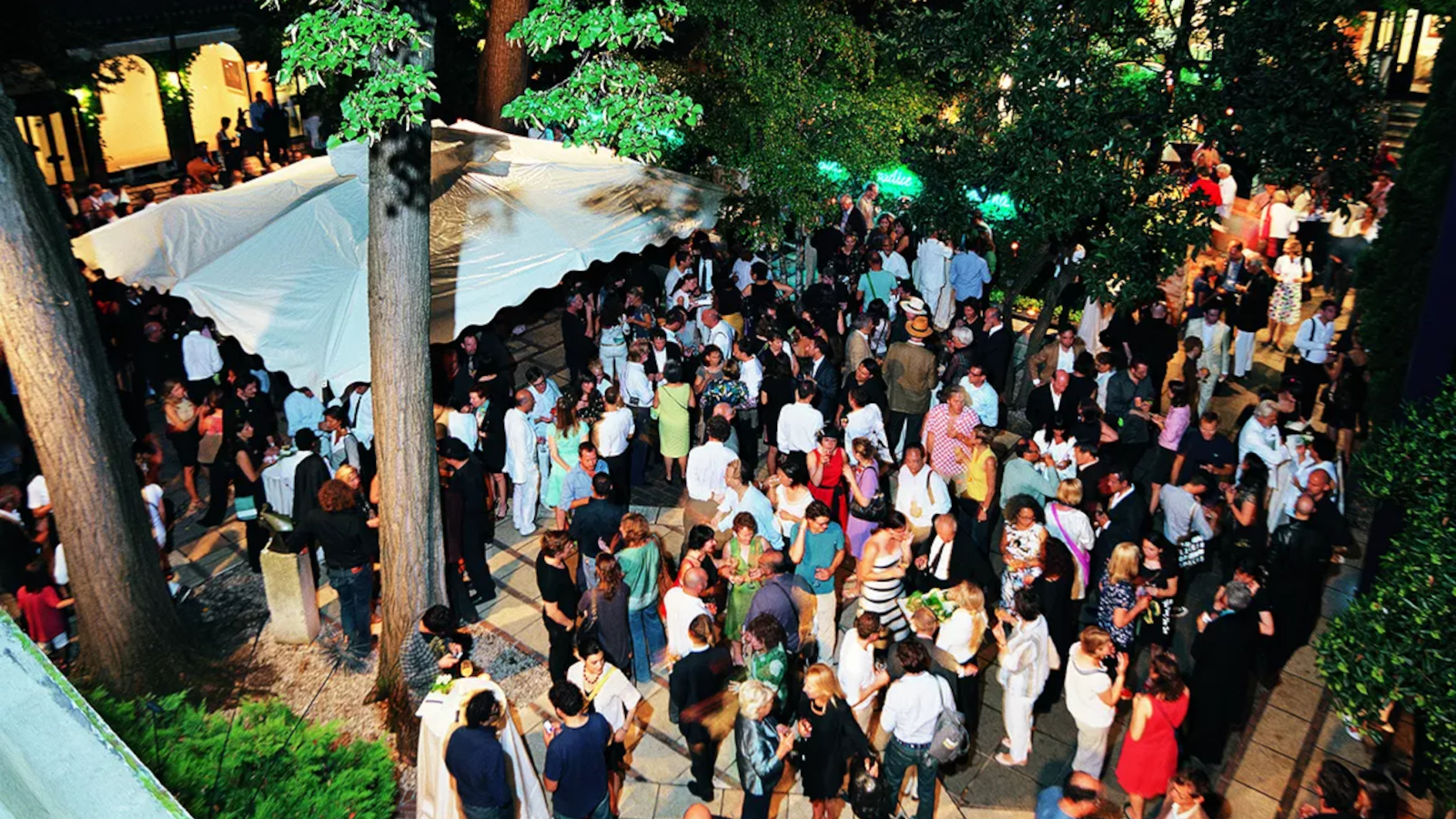
The Venice Architecture Biennale 2023 is almost upon us, and anticipation is running high. This year's theme, 'The Laboratory of the Future’, caters to a wide range of topics to be unpicked – as it should – promising exciting debate, spearheaded by this year's curator Lesley Lokko.
The full list of official contributors has now been announced revealing a mix of established names and emerging studios from the global scene - from David Adjaye and Francis Kéré, to Dream the Combine and Cave_bureau. A total of 89 contributors will form the main show (and over half of them are from Africa or the African Diaspora), which will be divided into six sections - all of which having impressively obtained a sustainability credential, flagging the importance of rethinking the festival model towards a more environmentally friendly future. At the same time, and for the first time ever, the events will include the Biennale College Architettura, which will run from 25 June to 22 July 2023, as fifteen renowned international tutors - such as Marina Otero, Nana Biamah-Ofosu, Sarah de Villiers and Manijeh Verghese - will work with fifty students, early career practitioners and academics from around the world during a four-week teaching programme.
Meanwhile, ahead of kick-off, Nigerian artist, designer and architect Demas Nwoko has been announced as the recipient of the Golden Lion for Lifetime Achievement of the 18th International Architecture Exhibition of La Biennale di Venezia.
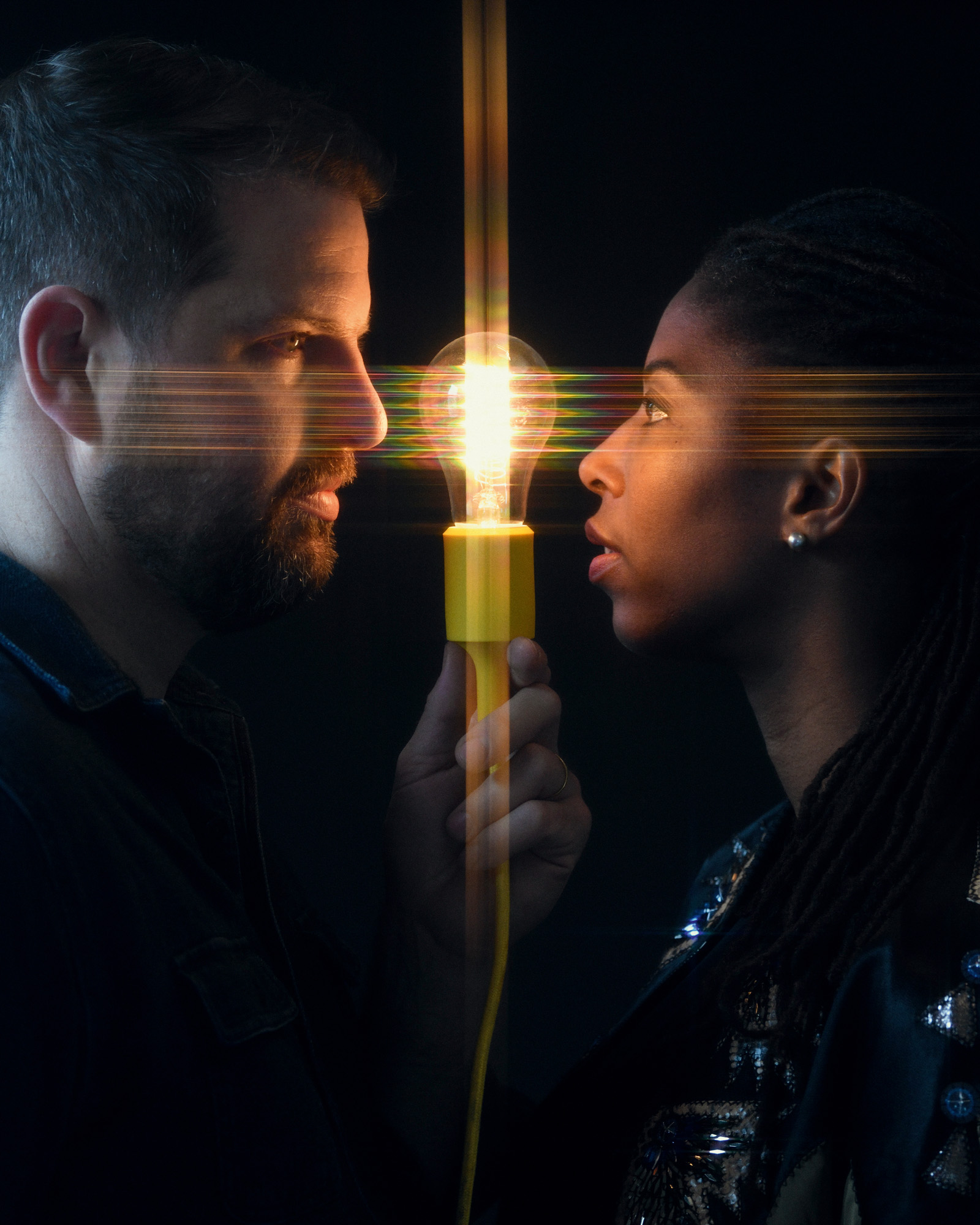
Lokko sees the 18th iteration of what is probably the grandest festival of the built environment in the world, as 'an agent of change.' 'In architecture particularly, the dominant voice has historically been a singular, exclusive voice, whose reach and power ignores huge swathes of humanity — financially, creatively, conceptually — as though we have been listening and speaking in one tongue only,' she says. 'The ‘story’ of architecture is therefore incomplete. Not wrong, but incomplete. It is in this context particularly that exhibitions matter.'
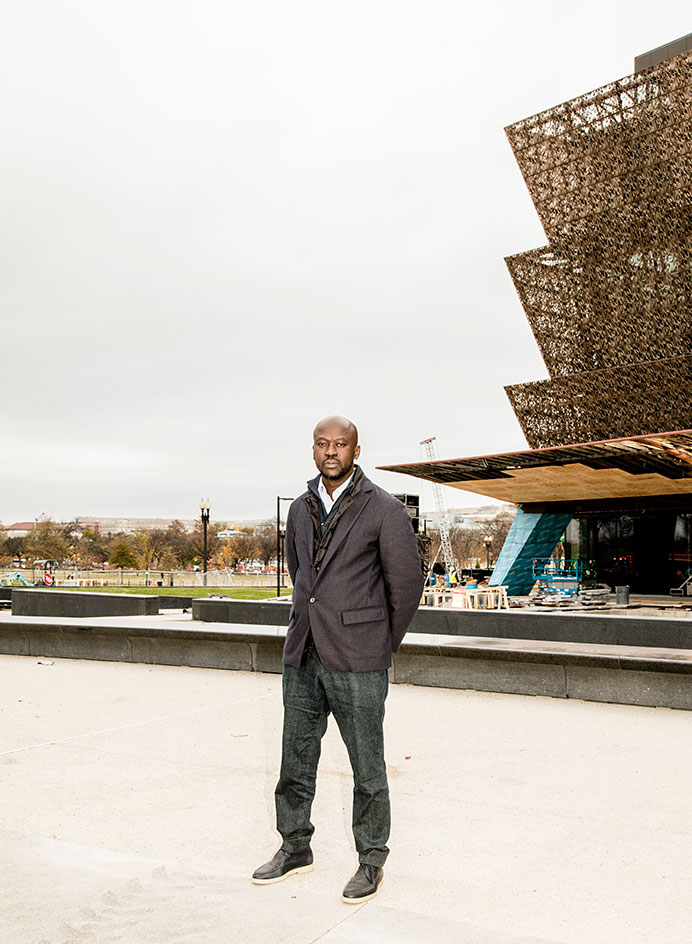
Meanwhile, spread across the Giardini park, the Arsenale grounds and several other locations in Venice, a wealth of national responses from different countries, as well as various collateral events, are set to offer a rich backdrop for more, deep architectural conversation. The world's biggest architecture festival is about to kick off – opening to the public on 20 May, and running through to Sunday 26 November 2023.
Venice Architecture Biennale 2023: the main exhibition
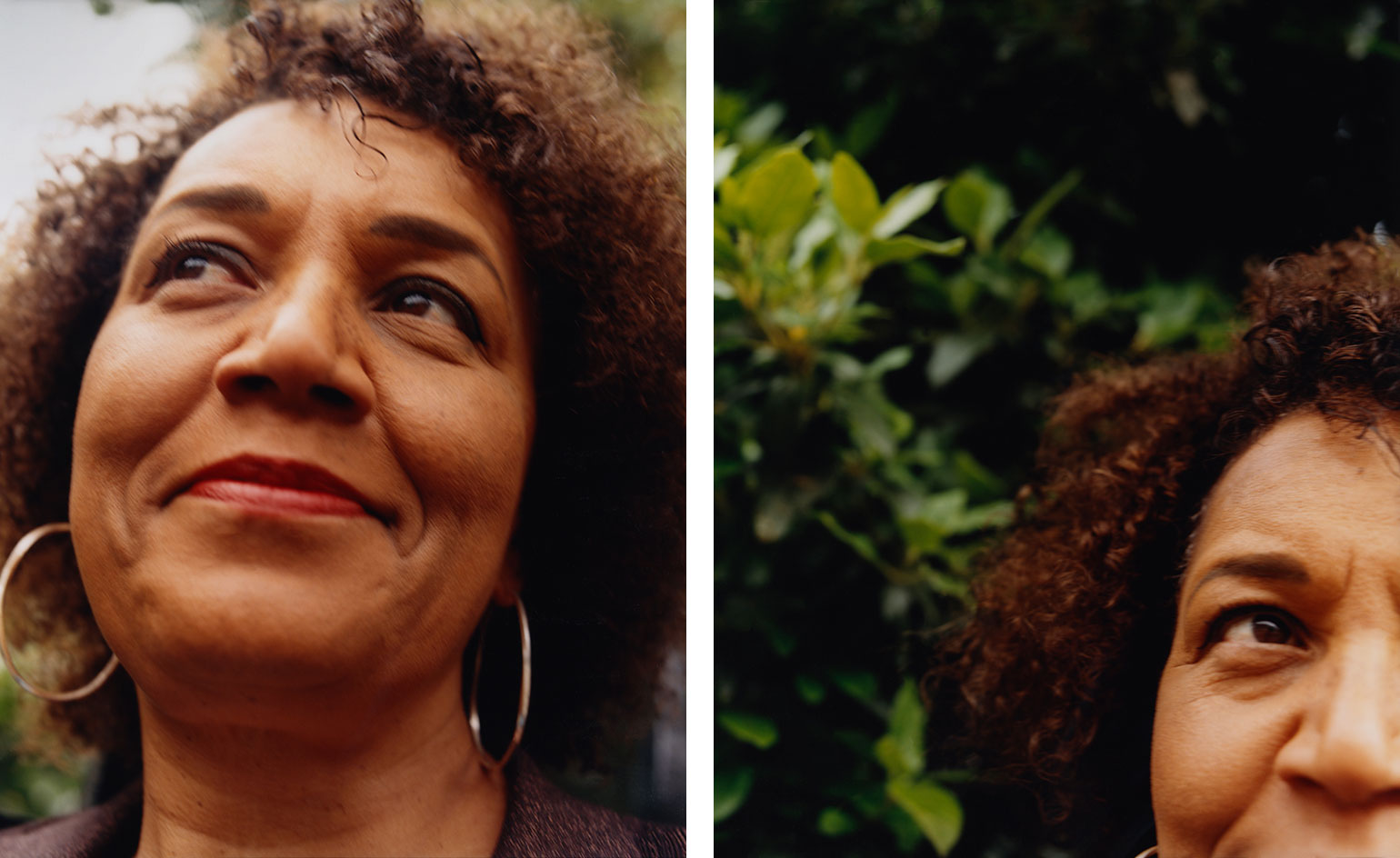
Curated by Lokko, the Venice Architecture Biennale 2023 main exhibition theme, titled 'The Laboratory of the Future’, puts Africa in the spotlight. ‘Africa is the laboratory of the future,’ Lokko said during the Venice Biennale press conference in May 2022. ‘We are the continent with the world’s youngest population, the fastest urbanisation, growing at a rate of four per cent per year, often at the expense of local ecosystems – so we are at the forefront of climate change, too. Yes, the show will focus on Africa, but we are not only talking about Africa – we use it as a place in order to try and understand everything everywhere. After all, the Biennale itself is a workshop for the future.’
The architect and academic, who is in the process of setting up the brand new African Futures Institute in Accra, a new architecture research institute and school in Ghana, drew on her extensive research and address book to discuss important, timely issues of diversity and inclusion in architecture, the role of African culture and power in the world – and beyond.
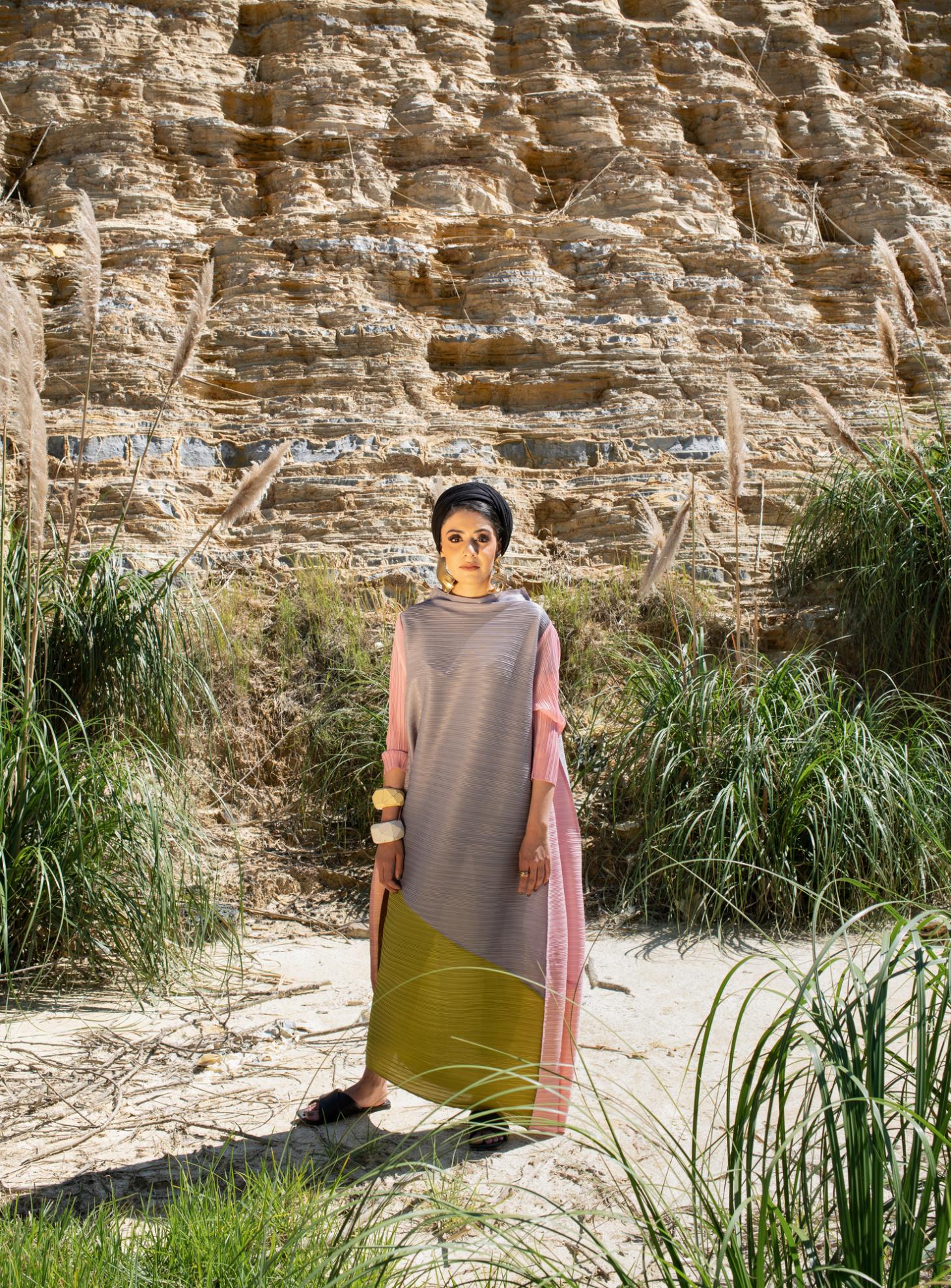
The full list of participants at the main show includes Adjaye Associates; atelier masōmī; basis; Cave_bureau; Hood Design Studio; Ibrahim Mahama; Kéré Architecture; Koffi & Diabaté Architectes; MASS design group; Olalekan Jeyifous; SOFTLAB@PSU; Studio Sean Canty; Sumayya Vally and Moad Musbahi; Thandi Loewenson; Theaster Gates Studio; urban american city (urbanAC); AD—WO; AMAA Collaborative Architecture Office For Research And Development; Andrés Jaque / Office for Political Innovation; autonoma; BDR bureau and carton123 architecten; DAAR - Alessandro Petti and Sandi Hilal; David Wengrow and Eyal Weizman with Forensic Architecture and Nebelivka project; Dream the Combine; Dualchas; Estudio A0; Flores & Prats Architects; Gbolade Design Studio; Gloria Cabral and Sammy Baloji with Cécile Fromont; Grandeza Studio; Huda Tayob; Kate Otten Architects; Killing Architects; Le laboratoire d'architecture; Liam Young; Low Design Office; MMA Design Studio; Neri&Hu Design and Research Office; Office 24-7 Architecture and Lemon Pebble Architects; orizzontale; Rahul Mehrotra with Ranjit Hoskote; SCAPE Landscape Architecture; Stephanie Hankey, Michael Uwemedimo and Jordan Weber; Studio Barnes; Suzanne Dhaliwal; Sweet Water Foundation; The Funambulist; Twenty Nine studio; Ursula Biemann; White Arkitekter; Wolff Architects; ZAO/standardarchitecture; Studio of Serge Attukwei Clottey; and Sweet Water Foundation.
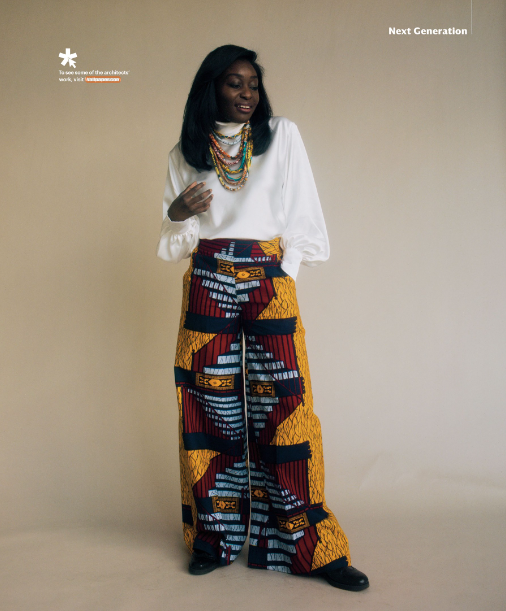
Complementing the main shows, a new Venice Architecture Biennale feature will be launched, titled 'Carnival'. This will include lectures, discussions, film and performances, crucial in drawing in the public and enhancing the dialogue between architecture and the world. 'Conceived as a space of liberation rather than a spectacle or entertainment, Carnival offers a space for communication in which words, views, perspectives, and opinions are traded, heard, analysed, and remembered,' Lokko said at the recent Biennale press conference. Carnival is supported by Rolex, the exclusive partner and official timepiece of the exhibition.
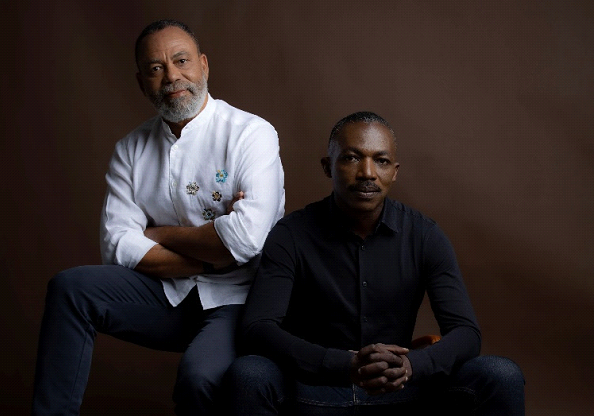
Applied Arts Pavilion Special Project
This special section of the exhibition is returning this year with a focus on modernist architecture and 'the ways in which this distinctive architectural style was initially developed and employed as a tool to support colonial rule before being adapted by West African architects to promote the excitement and possibilities of the period that followed Ghana becoming the first sub-Saharan African country to gain independence in 1957.' The show, titled 'Tropical Modernism: Architecture and Power in West Africa' is curated by Christopher Turner (V&A) with Nana Biamah-Ofosu and Bushra Mohamed (AA).
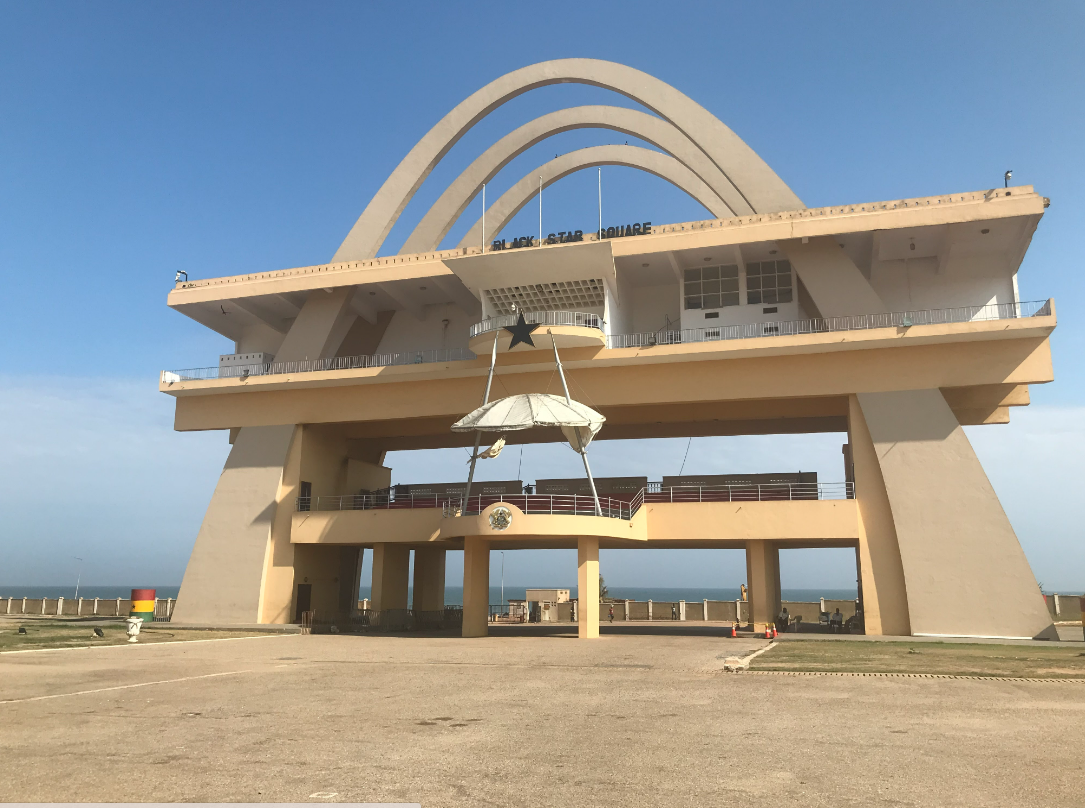
'Through close study of the work of the Department of Tropical Studies and its collaboration with KNUST, the V&A’s Venice presentation explores the ways in which Tropical Modernism was adapted by Ghanaian architects to promote Nkrumah’s Pan-African ideals during a transitional moment in which new freedoms were won and a break with the colonial past was articulated through architecture. It considers the power of architecture, both as a means of colonial suppression and a symbol of nascent political freedom, as well as exploring the specific legacy of Tropical Modernism in West Africa,' said Dr Christopher Turner, keeper of art, architecture, photography & design at V&A and the exhibition's lead curator.
Venice Architecture Biennale 2023: the national pavilions
The Venice Architecture Biennale main show is always framed by the multi-layered responses and the variety of the national participations – some presented in dedicated pavilions in the Giardini park, and others spread across different venues all around Venice, instigating a journey of exploration for visitors (often in more senses than one, as they navigate the city's labyrinthine network of canals and alleys in search of shows). Some previews have already been released, but more are to come in the next few weeks...
British Pavilion
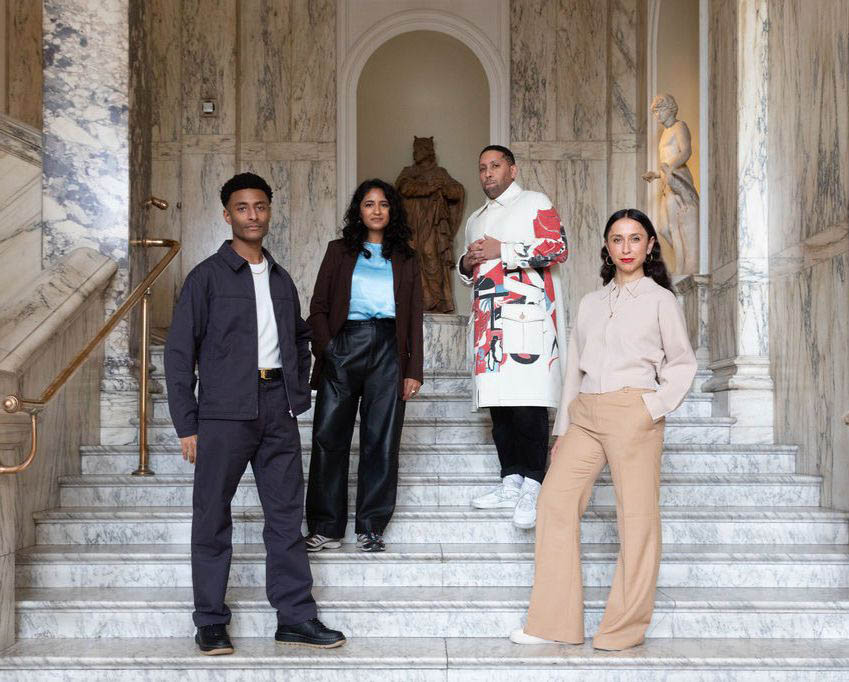
The British Pavilion will be led by a group of creatives – Jayden Ali, Joseph Henry, Meneesha Kellay and Sumitra Upham – focusing on a series of installations by six artists and designers, including a new film and soundscape. 'Dancing Before the Moon,' as the show will be titled, was conceived to promote 'everyday rituals (from growing food and cooking to playing games and dancing) are tools for diasporic communities to establish spaces and present new ways of thinking about architecture and the built environment,' the team explained. The artists, Yussef Agbo-Ola, Mac Collins, Shawanda Corbett, Madhav Kidao and Sandra Poulson, will reflect, through their work, on global cultural practices that impact space. 'The British Pavilion at the Biennale Architettura 2023 is a space for rethinking the role that people play in shaping the built environment. It demonstrates the need for architecture to look beyond buildings and economic structures and towards everyday social practices, customs and traditions in order to meaningfully reflect how people use and occupy space,' says Ali.
Uzbekistan Pavilion
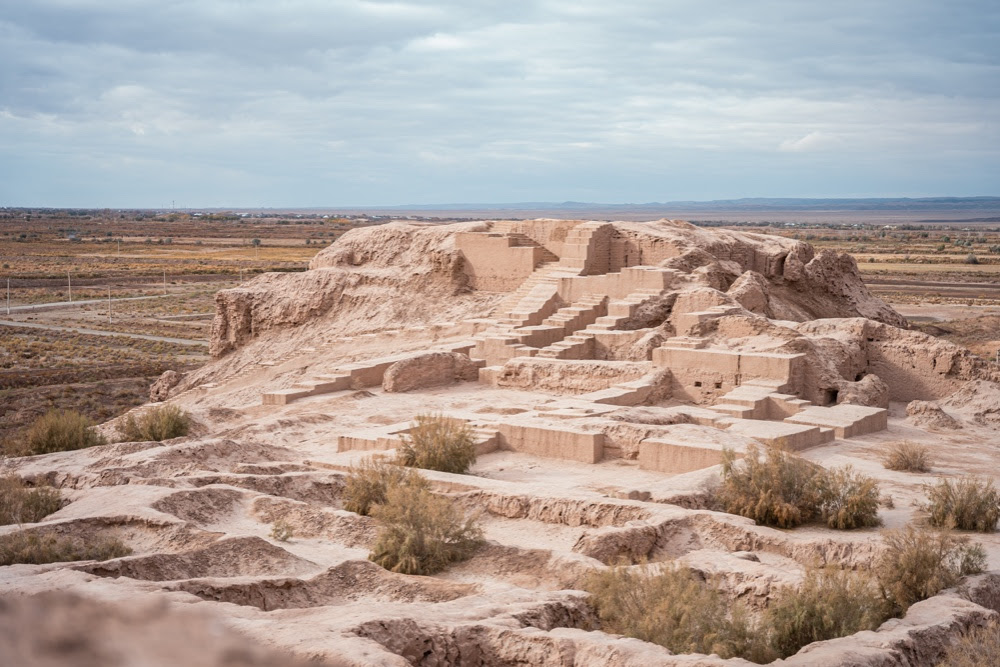
The Uzbekistan Pavilion 2023 places heritage at the heart of their contribution to the Venice Architecture Biennale. Its creators take their cues from the festival's overall theme, 'The Laboratory of the Future', as envisioned by curator Lesley Lokko, who imagines the exhibition as ‘a kind of workshop; a laboratory where participants and the audience imagine what the future can hold’. Responding to this, The Art and Culture Development Foundation under the Ministry of Culture of the Republic of Uzbekistan (ACDF) in Tashkent has appointed French-Moroccan office Studio KO to curate their participation to the 18th iteration of the architecture biennale. The practice's previous involvement in Tashkent saw the transformation of a 1912 diesel station into the future Centre for Contemporary Arts (CCA) - the country's first contemporary art centre. It exemplifies the studio's ability to breathe new life into historic structures while preserving their essence.
Danish Pavilion
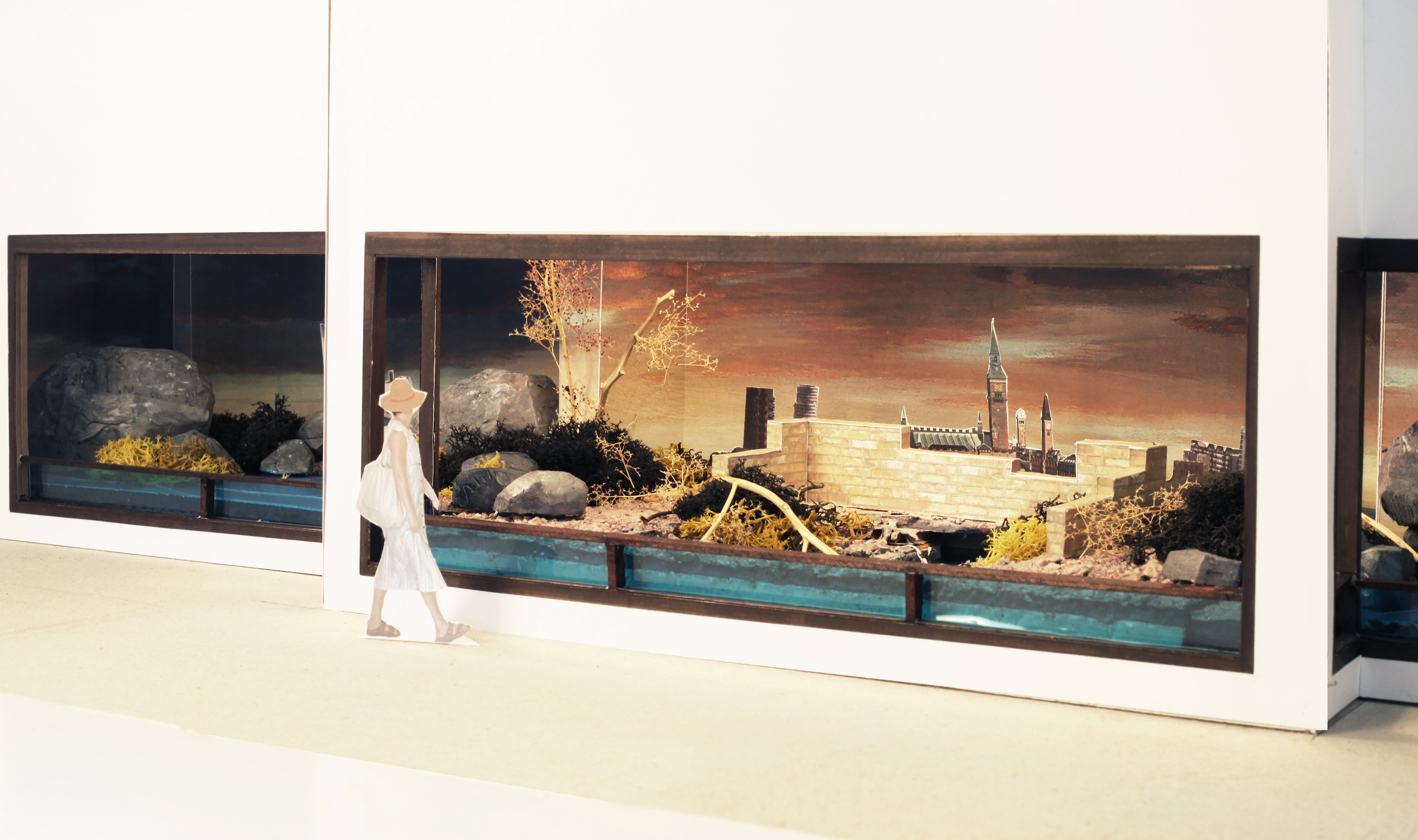
The Danish Pavilion, curated by Josephine Michau and in collaboration with landscape architectural firm Schønherr, will be titled 'Coastal Imaginaries', and promises to focus on climate change, and specifically the rising sea levels. Schønherr proposes 'a design for the city which would allow it to better coexist with the rising seawater and rainwater levels that result from climate change, and which pose a significant threat to Copenhagen.' The city, which is often hailed for its quality of living, is one of many parts of the world under threat due to coastal changes. The exhibits aim to highlight this, while offering changes to its landscape infrastructure to help prevent flooding.
Korean Pavilion
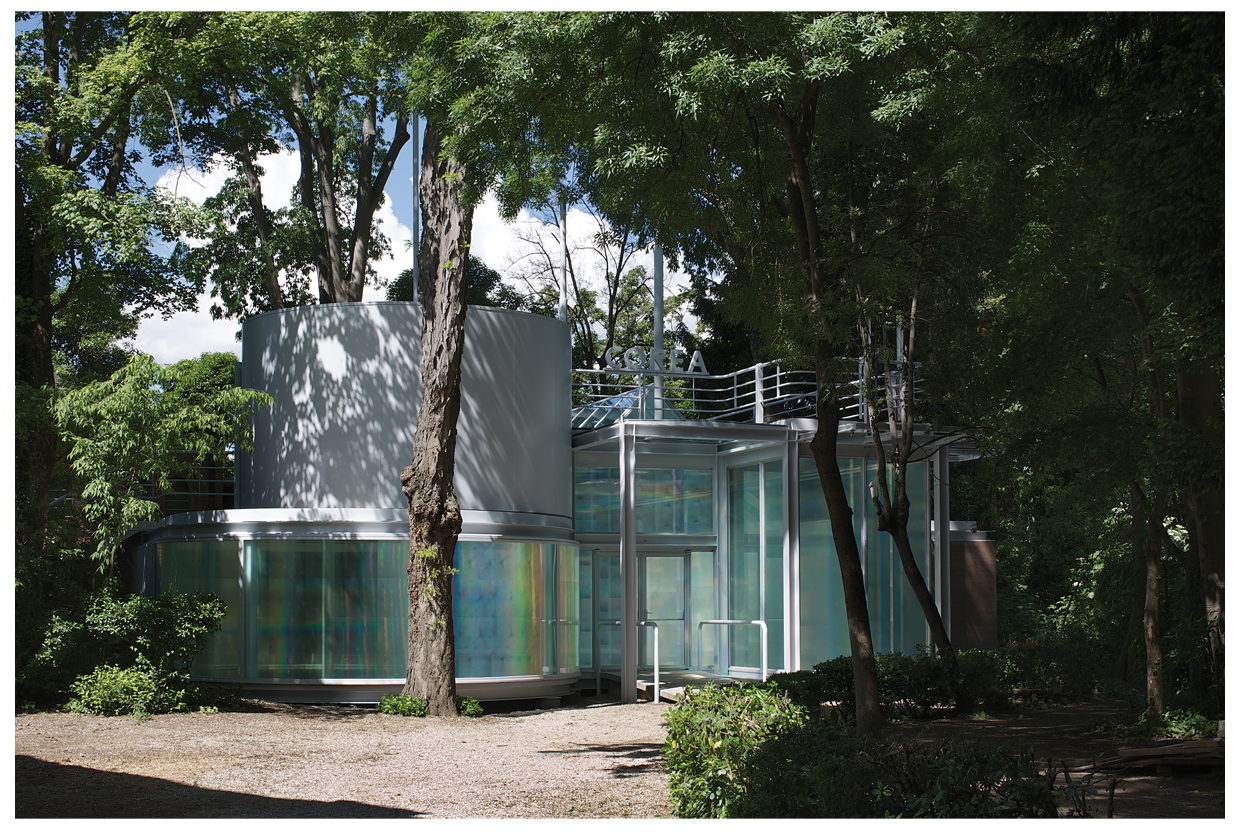
'2086: Together How?', the Korean representation at Venice Architecture Biennale 2023, asks questions about the impact of the environmental crisis in some fifty years. The show is curated by artistic directors Soik Jung and Kyong Park, and looks into case studies of small communities in South Korea. 'Each community is a case study which utilizes the community leader’s deep knowledge of the place and the architect's spatial analysis to evaluate its current state, and propose site-specific future scenarios leading up to 2086. For instance, in the case of Gunsan, practitioners have explored how to work with abandoned homes and buildings to return the old city’s urban landscape to a more natural state. Moreover, each project is motivated by central concerns of how to cope with decaying urban centers and rural villages due to centuries of uneven capitalist development thinking. As such, these projects are about how the past can be connected with the future, and how localism can reshape globalism,' says Soik Jung.
Swiss Pavilion
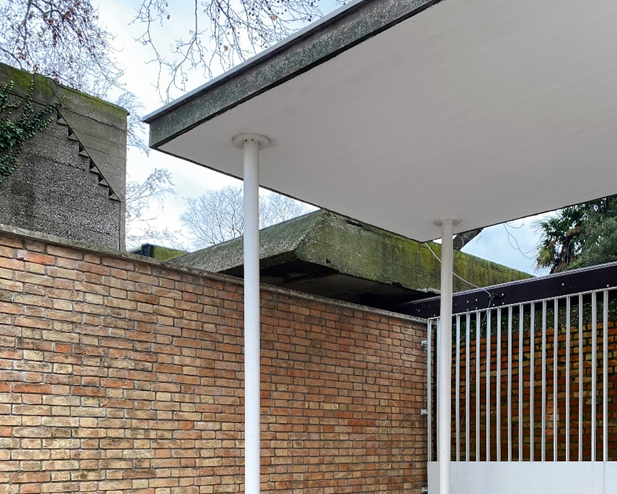
Artist Sander and architecture historian Philipp Ursprung are behind this year's Swiss Pavilion. Their exhibit is titled 'Neighbours' and it is set to highlightb 'oth the spatial and structural proximity of the Swiss pavilion to its neighbour and the professional bond of the two architects: Bruno Giacometti (Swiss pavilion) (1907 – 2012) and Carlo Scarpa (Venezuelan pavilion) (1906 - 1978).'
UAE Pavilion
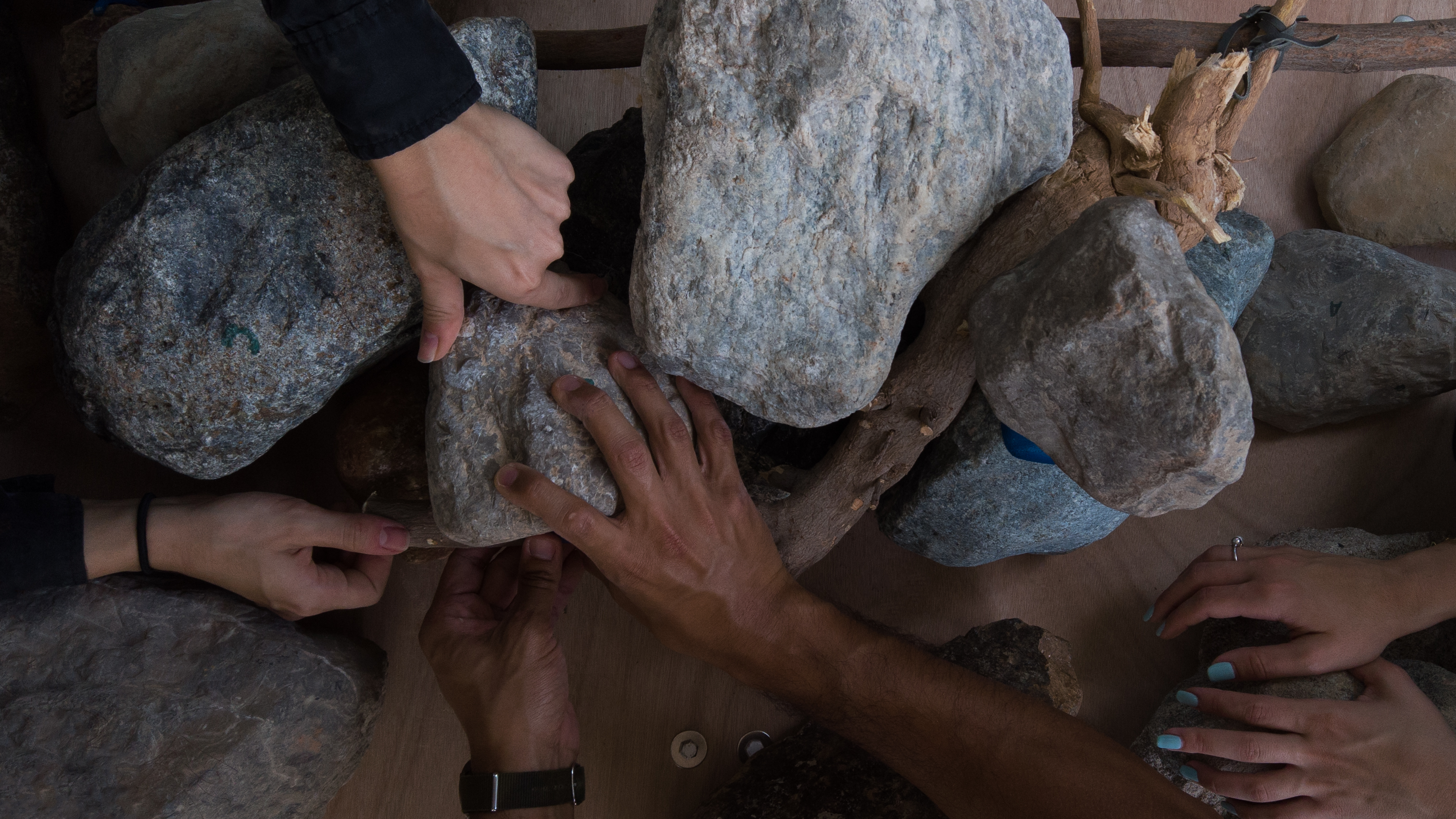
Curator Faysal Tabbarah examines how arid environments can be rich spaces of productivity and natural welath, in the UAE Pavilion's exhibition, ‘Aridly Abundant'. Tabbarah, who is Associate Dean and Associate Professor of Architecture at the College of Architecture, Art and Design at American University of Sharjah, examines architectural possibilities in this particular environment in various parts of the world: 'The overarching question I’m exploring through Aridly Abundant is: What architectural possibilities can emerge when we reimagine arid landscapes as spaces of abundance? The National Pavilion UAE’s exhibition at Biennale Architettura 2023 delves into themes, lessons and questions based on learnings from within the UAE’s arid landscapes that other places around the world facing the threat of aridity and desertification can find of use, including countries across Africa, Asia, and southern Europe such as Italy, Spain, and Greece.'
Estonian Pavilion
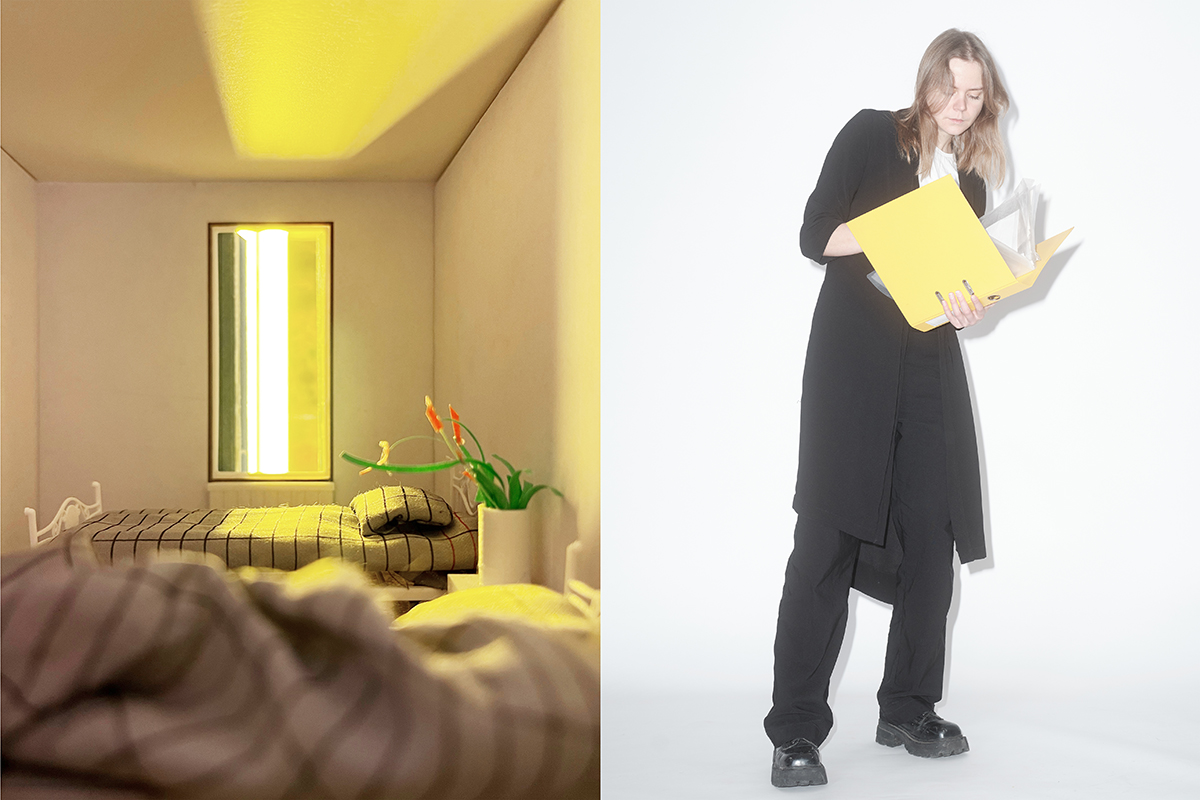
Bringing the discussion around architecture back to the context of the home, the Estonian display is curated by Aet Ader, Arvi Anderson and Mari Möldre. Titled 'Home Stage' it will be hosted inside a real life rental apartment -address: Salizada Streta 96, Venice. 'The Estonian pavilion exists in the format of a durational performance, where ordinary domestic duties as well as fictional outbursts, both scripted and non-scripted, all take place in the public eye. One of the performers, Paula Veidenbauma, is intrigued by how issues of invisibility, such as care, aggression, and loneliness, contrast and accelerate in tandem with the vast visibility of real estate, which especially in Venice is driven by hyper-tourism and gentrification, said Möldre.
Australian Pavilion
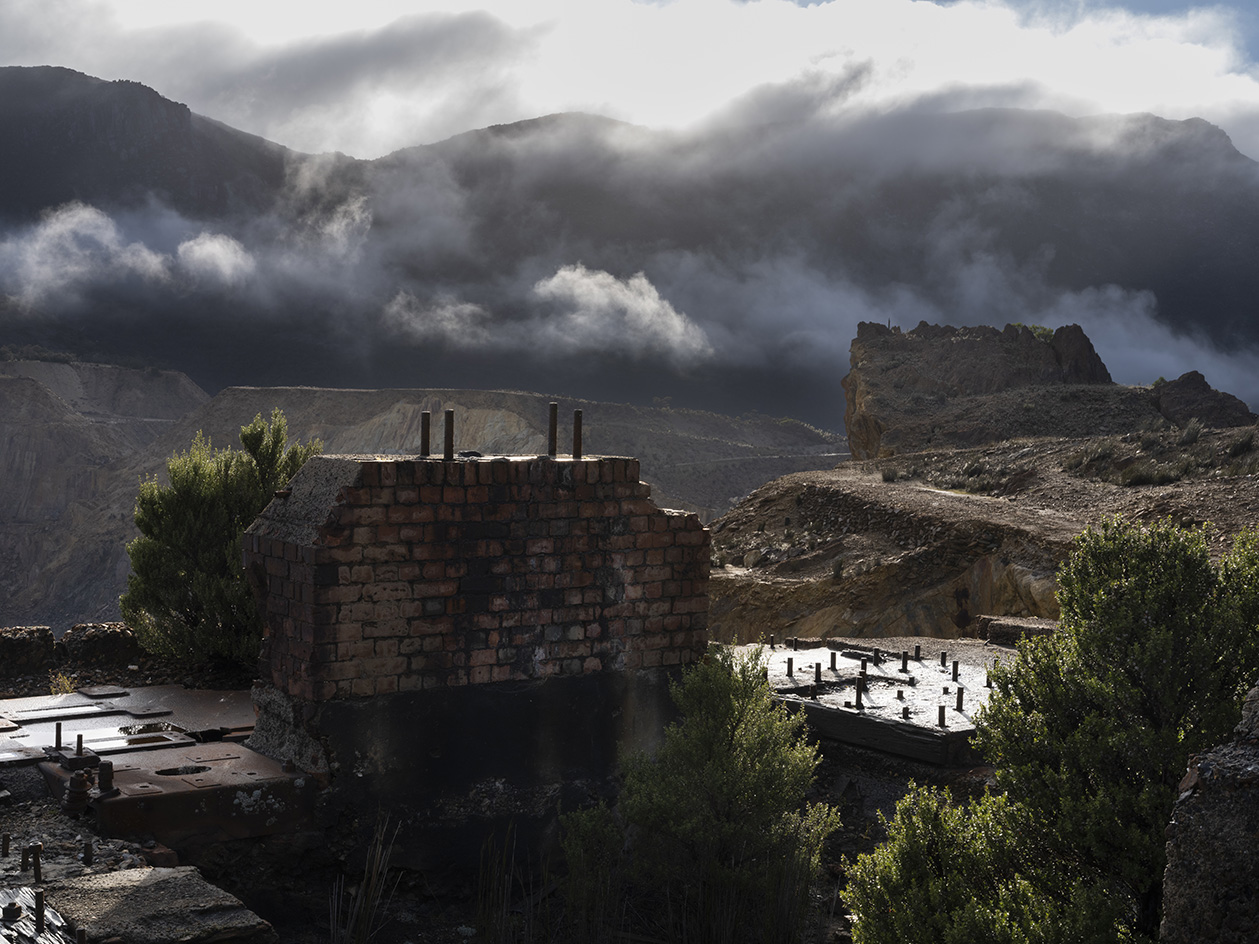
This year, the Australian Institute of Architects presents 'Unsettling Queenstown,' zooming in on the namesake settlements found all over the former British Empire. These hubs, investigated in this installation through fragments of real and fictional 'Queenstowns', drawing for instance on the Queenstown of Tasmania, are used to explore ideas of colonialism and resource extraction. The show is curated by Anthony Coupe, Director at Mulloway Studio and Emily Paech, Project Lead Interpretation + Urban Environments at Mulloway Studio, academics Ali Gumillya Baker, Associate Professor at Flinders University and Julian Worrall Professor of Architecture and Head of School of Architecture and Design at the University of Tasmania, and Tasmania-based photographic artist Sarah Rhodes. The team stated: 'The British Imperial hangover is pervasive in every corner of the globe: there is quite literally a Queenstown on every continent, bar Antarctica. Unsettling Queenstown unites decolonial theory and praxis, weaving elements from real places and gleanings from current architectural intelligence in search of ingredients to contribute to Venice’s Laboratory of the Future.'
Brazilian Pavilion

Co-curators of the Brazilian Pavilion Gabriela de Matos and Paulo Tavares look at notions of decolonisation, national identity, diaspora, indigenous knowledge systems, as well as around Brasília and modernism, while connecting to Lokko's main theme through the vector of the African diaspora. Titled 'Terra', the exhibit draws on the past to compose 'possible futures, focusing on the role of land in shaping our understanding of heritage and identity.' The pavilion is set to feature projects born of Indigenous and Afro-Brazilian knowledge about land and territory, as well as bespoke commissions such as an audio-visual piece by Brazilian filmmaker Juliana Vicente, archival photographs complied by historian Ana Flávia Magalhães Pinto, the ethno-historical map of Brazil by Curt Nimuendajú, and the Brasília Quilombola map.
German Pavilion
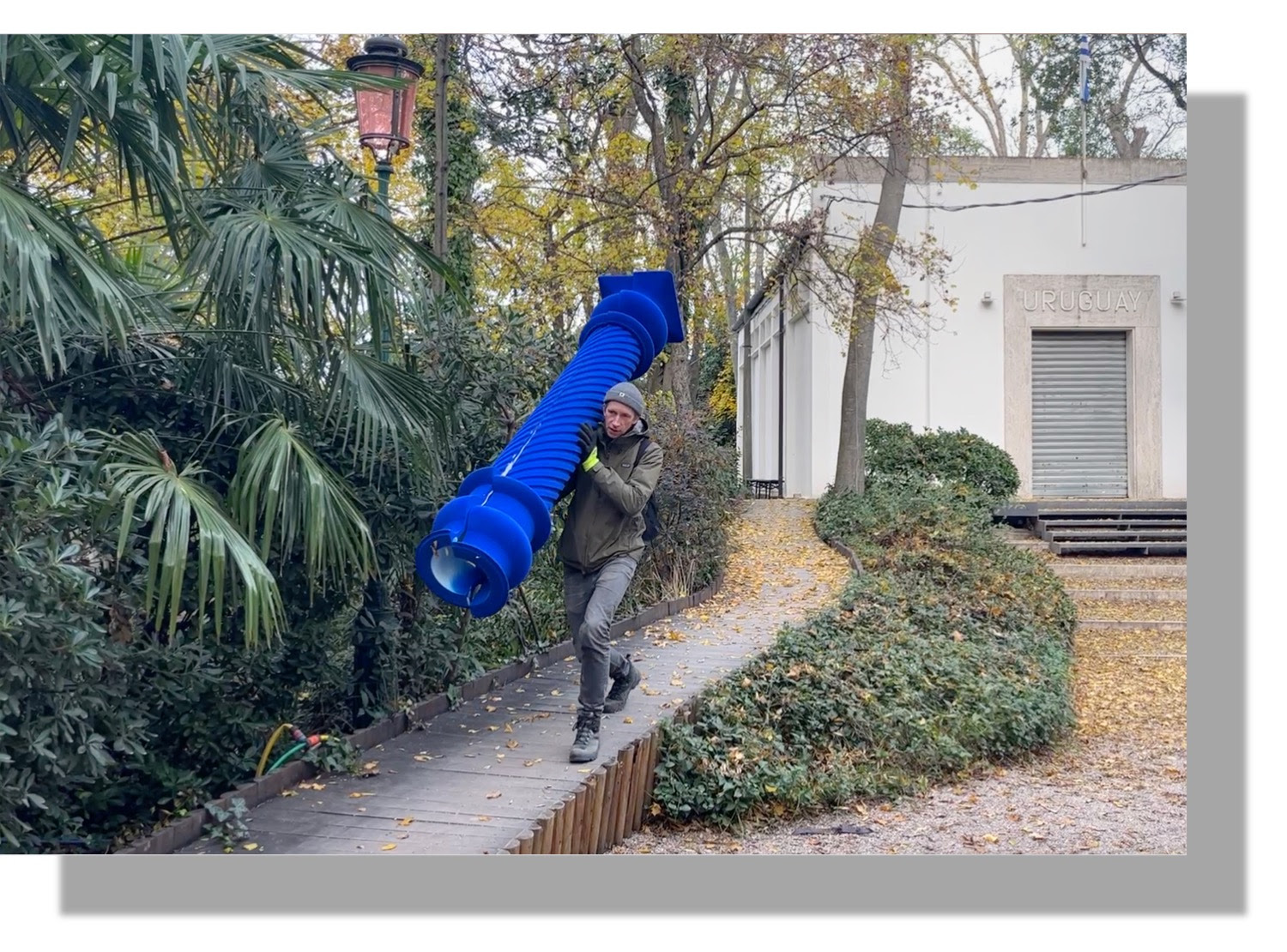
Thinking about the past while planning about the future, the German contribution is titled 'Open for Maintenance – Wegen Umbau geöffnet'. Curated by ARCH+ / SUMMACUMFEMMER / BÜRO JULIANE GREB it focuses on themes of care and maintenance. Maria Eichhorn’s work Relocating a Structure, Germany’s contribution to the Biennale Arte 2022, becomes part of the exhibit as the team this year 'squats and maintains' the pavilion, taking it over in its existing condition. The whole Pavilion becomes a 'found object' as notions of sustainable architecture, circular economy, as well as preservation and repair come into play.
Polish Pavilion
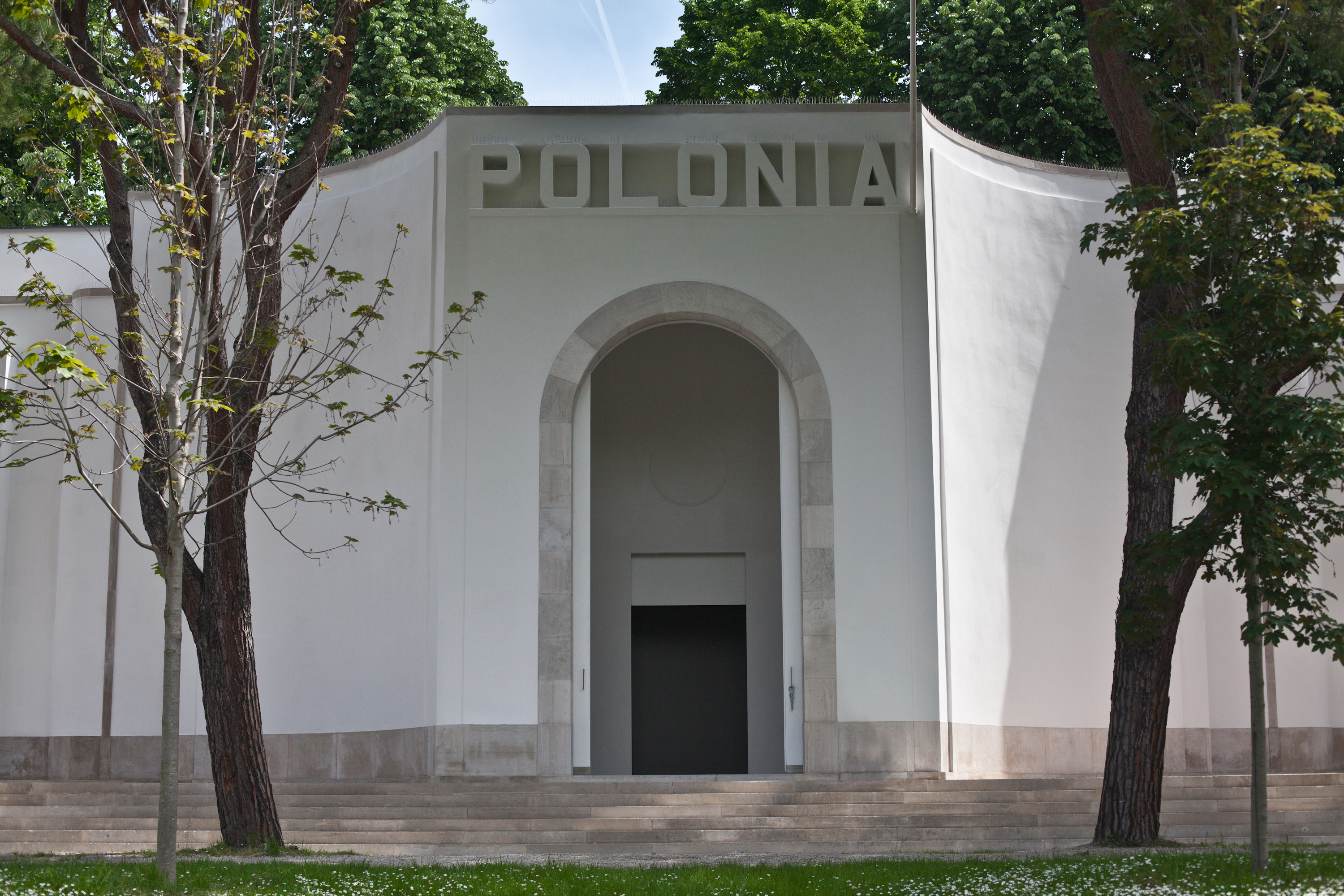
The Polish Pavilion will be filled by the frames of four life-size houses. The project, titled 'Datament', is set to serve as an instigator of conversation around physical and digital, data and real life. The installation was created drawing on works and thoughts of artist Anna Barlik and architect Marcin Strzała, guided by curator Jacek Sosnowski.
Saudi Arabian Pavilion
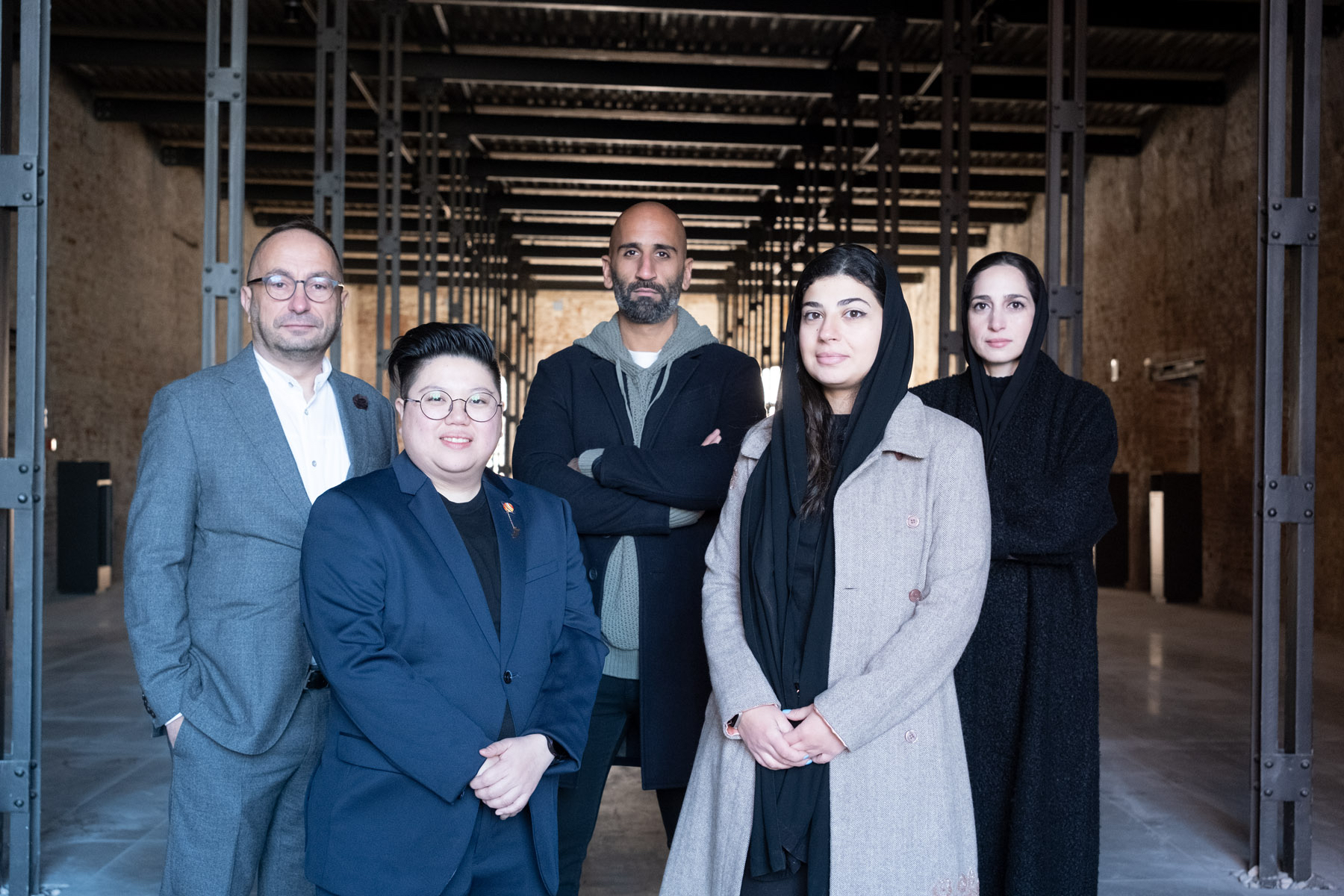
The Saudi Pavilion team in Venice Architecture Biennale 2023 is led co-curators Basma Bouzo, Noura Bouzo, Joharah Lou Pabalate, and Cyril Zammit, along with architect AlBara Saimaldahar. Their installation places the country's cultural heritage at its heart, while trying to propose 'innovative solutions that contribute to improving societies.' CEO of the Architecture and Design Commission, Dr. Sumayah Al-Solaiman, said: 'We are proud to be participating at the Venice Architecture Biennale for the second time. Taking part in such events, provides us with a global platform to showcase the Kingdom’s architectural vision with the world. We look forward to engaging with architects and designers from all around the globe to share thoughts, exchange ideas, and learn from different experiences.'
Scottish Pavilion

Commissioned by the Scotland + Venice partnership and curated by the Architecture Fringe, -ism, and /other, 'A Fragile Correspondence,' the title of the Scottish contribution to the biennale, will take place this year at the Arsenale Docks. 'From the forests around Loch Ness, the seashore of the Orkney archipelago, and the industrialised remnants of the Ravenscraig steelworks, the project takes us on a journey through three Scottish landscapes across the Highlands, Islands and Lowlands,' write the curators. 'Through these creative explorations, and by proposing a new lexicon of terms and definitions, the exhibition looks to see the potential in possible futures that sensitively work in correspondence with the land rather than simply upon it.' The displays will be arranged into four distinct areas. Visitors will be guided through the landscapes of Loch Ness, Orkney, and Ravenscraig before reaching a reading room and project lexicon.
Singapore Pavilion
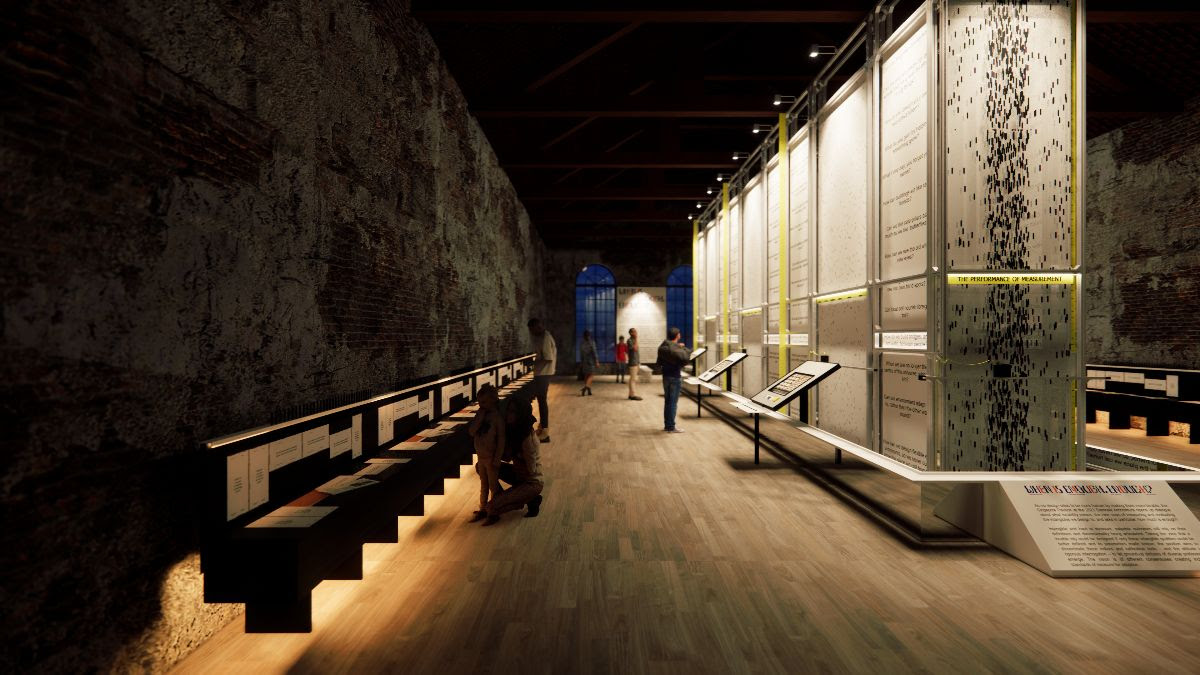
The Singapore Pavilion delves into concepts around measurements and impact, in a project led by curators and architects Melvin Tan, Adrian Lai and Wong Ker How. Titled 'WHEN IS ENOUGH, ENOUGH? The Performance of Measurement,' the pavilion ponders on how to measure community interaction, how to evaluate intangible qualities and importantly, 'how much is enough?' Visitor interaction and data collection are to be incorporated into the displays too, as guests are invited to answer six questions, as they walk around the centrepiece: a Values Measurement Machine, 'a spectacular series of analogue plotting machines marking data on five-metre-tall calligraphic scrolls.'
Spanish Pavilion
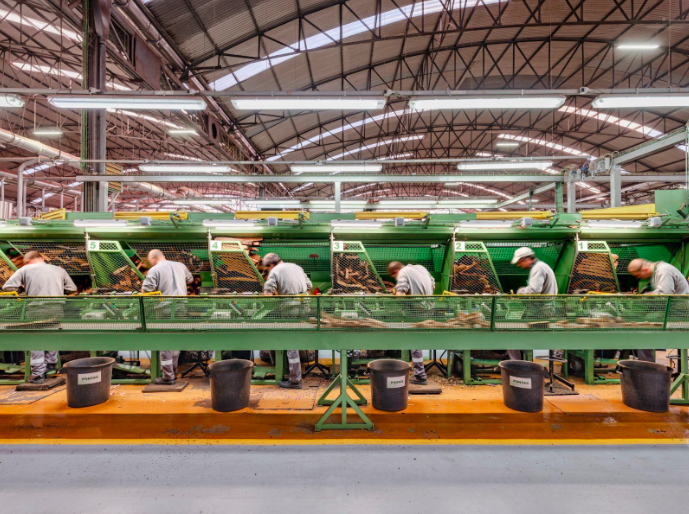
'Foodscapes', Spain's contribution to the Venice Architecture Biennale 2023, takes a different route. Co-curators and architects Eduardo Castillo-Vinuesa and Manuel Ocaña explore their fascination around their country's agri-architectural context and infrastructure, which they call 'the food engine of Europe.' Sustainability and future planning here is approached through ideas around food and nourishment, as well as feeding our cities and the world.
Turkish Pavilion
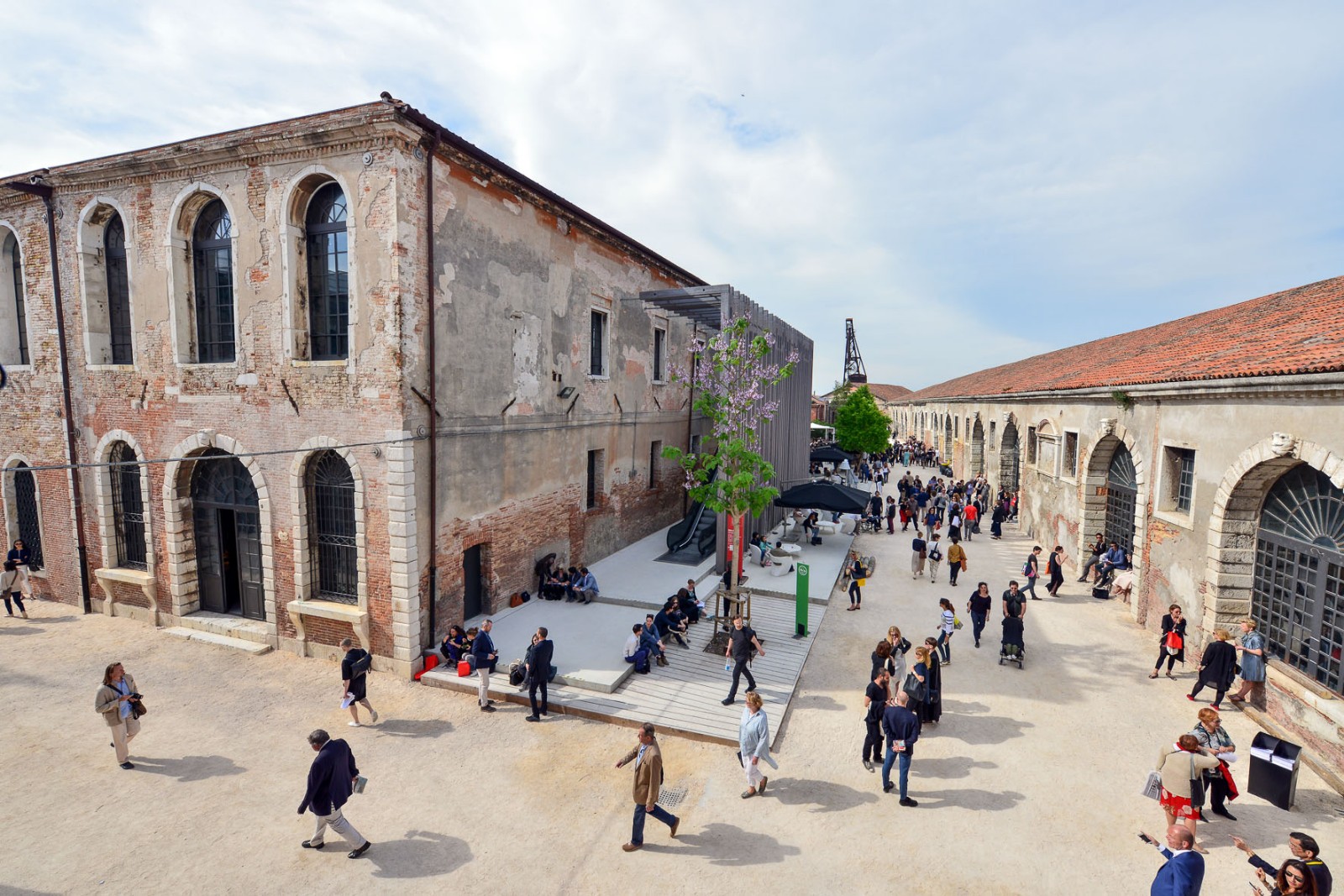
Meanwhile, the Turkish Pavilion takes a more theoretical path with its display, titled 'Ghost Stories: The Carrier Bag Theory of Architecture.' Curated by Sevince Bayrak and Oral Göktaş, the show takes it cues from Elizabeth Fisher’s Carrier Bag Theory of Evolution, which argues that, 'rather than hunting tools, the first cultural device used by humans was probably a carrier bag, which allowed them to transport the vegetables they gathered.' The team draws parallels between this approach and architecture, proposing the exploration of architecture and abandoned buildings with a view to tell their stories and the truths they reveal. The exhibit will be accompanied by a manifesto, as well as a book to delve deeper into the subject.
US Pavilion
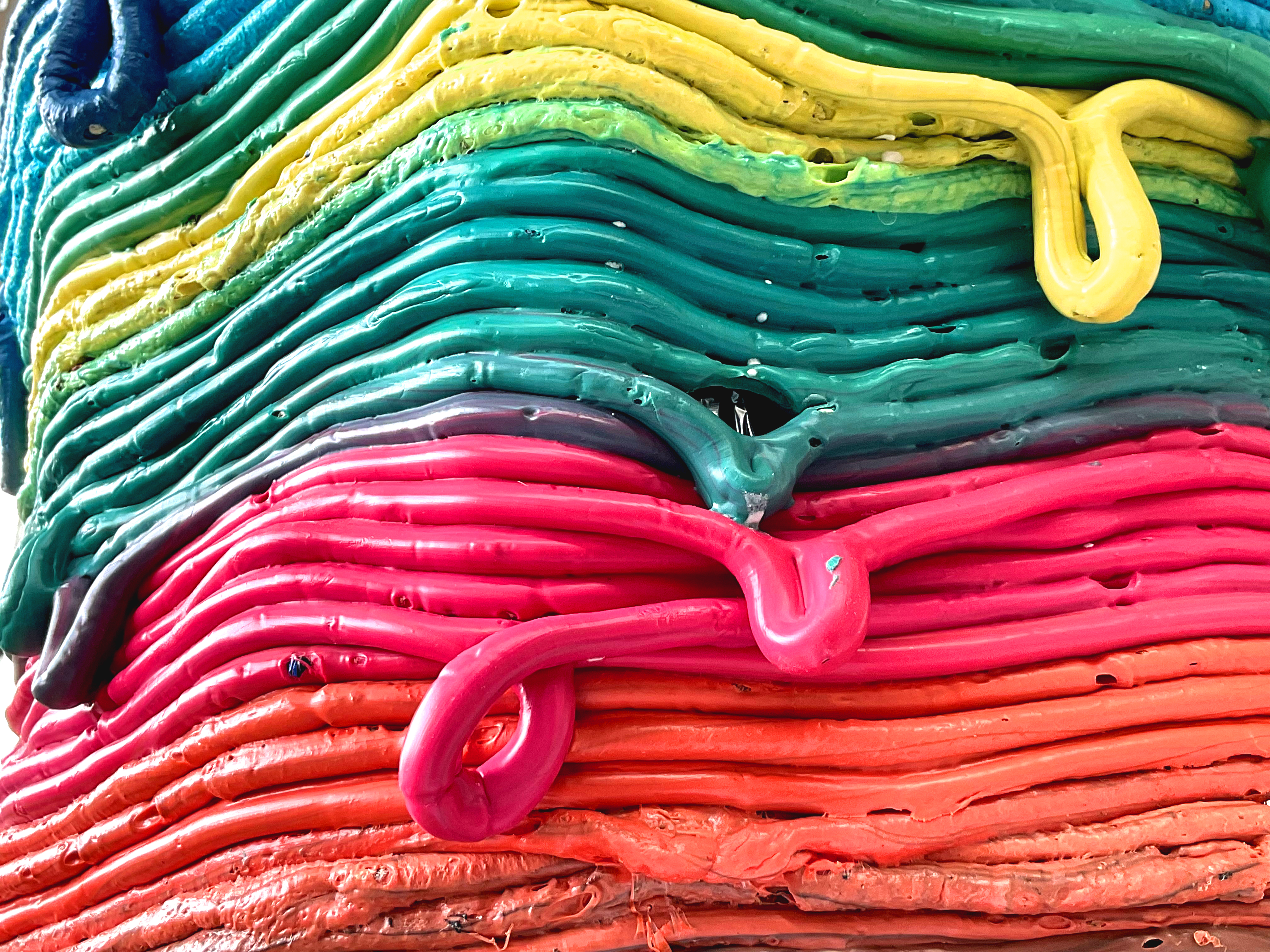
Tizziana Baldenebro and Lauren Leving are curating the USA's national participation, with an exhibition titled 'Everlasting Plastics.' The duo has brought together artists and designers who look at the impact the ubiquitous material has in our lives and the earth - while 'reframing the overabundance of plastic detritus in our waterways, landfills, and streets as a rich resource.' 'Inherent to art and architecture is the aesthetic and materiality of form. Everlasting Plastics bridges this divide by drawing on the power of looking to serve as an entry point for reconsidering our relationships to material worlds,” said Baldenebro. “As the climate crisis becomes a tangible reality, our daily objects must be agents of change. This exhibition extends SPACES’ commitment to supporting artistic experimentation by bringing together a range of practices that are examining, salvaging, and upending a global calamity.'
Canadian Pavilion
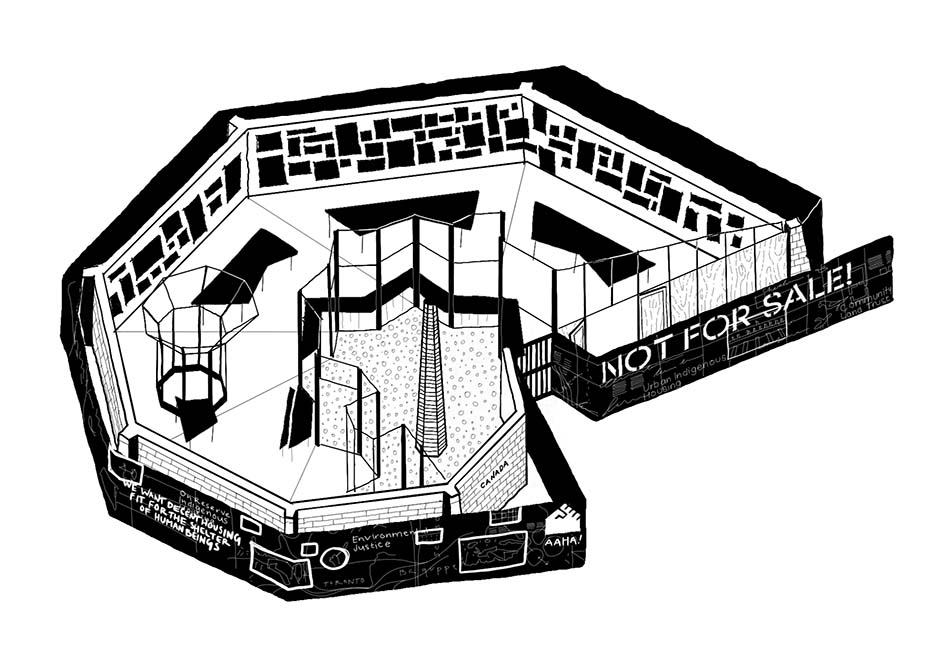
'Not for Sale!' is the exhibition housed at the Canada Pavilion in Venice this year, and it aims to draw attention to issues, challenges and potential surrounding the housing crisis in Canada. Connections - among people, as well as between humans and nature - become a key narrative in the show too. The display has been curated by Architects Against Housing Alienation's (AAHA), a curatorial collective.
Finnish Pavilion
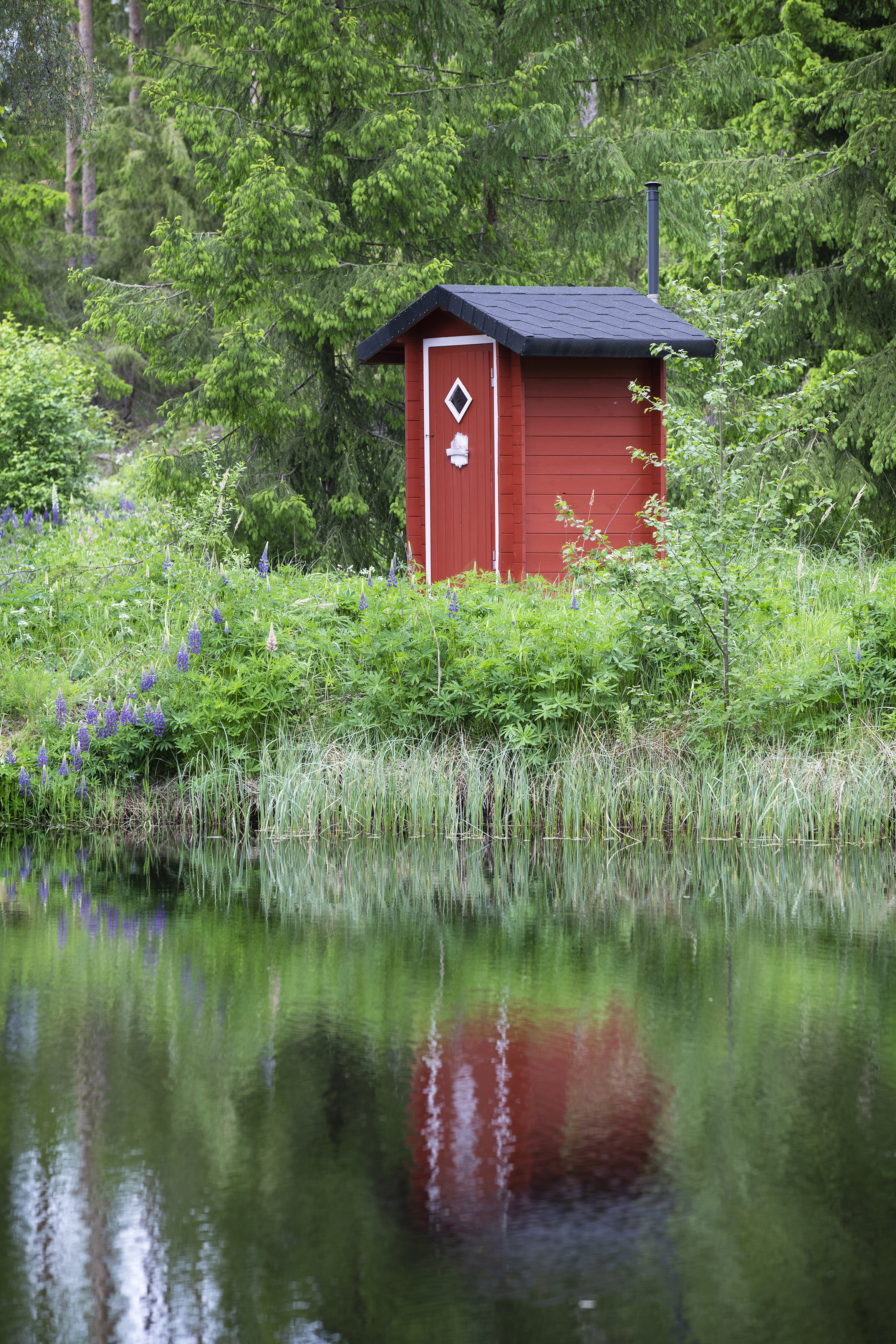
The Finns are tackling sustainability through a difference lens during this year's show - welcome to an exhibition celebrating Huussi, the Finnish answer to the portable, bio toilet. The pavilion has been curated by The Dry Collective, a group of architects, designers and artists led by project curator Arja Renell, and the displays aim to highlight the current, unsustainable practices around our water and fertilizer use, in particular when it comes to sanitation.
Italian Pavilion
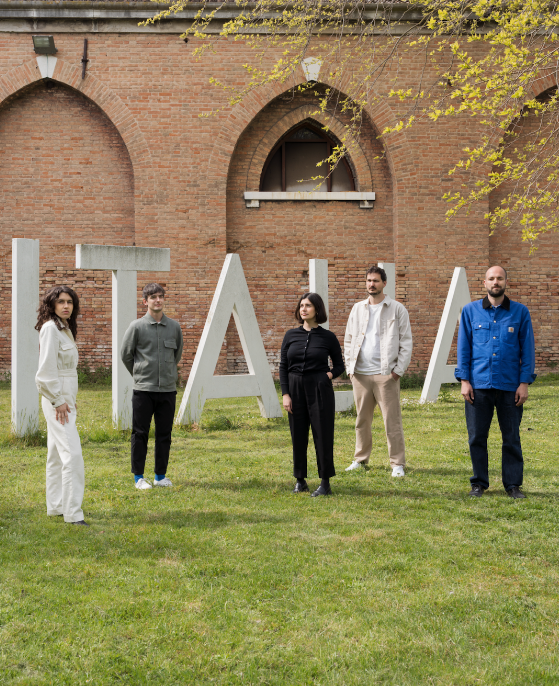
Located in the Arsenale, the Italian Pavilion, with a show titled 'Everyone belongs to everyone else,' has been curated by Fosbury Architecture, and focuses on the generation of architects under 40 in the country, who 'grew up and were trained against a backdrop of permanent crisis and who have therefore made collaboration, sharing, and dialogue the basis of all their activities.'
Luxemburg Pavilion
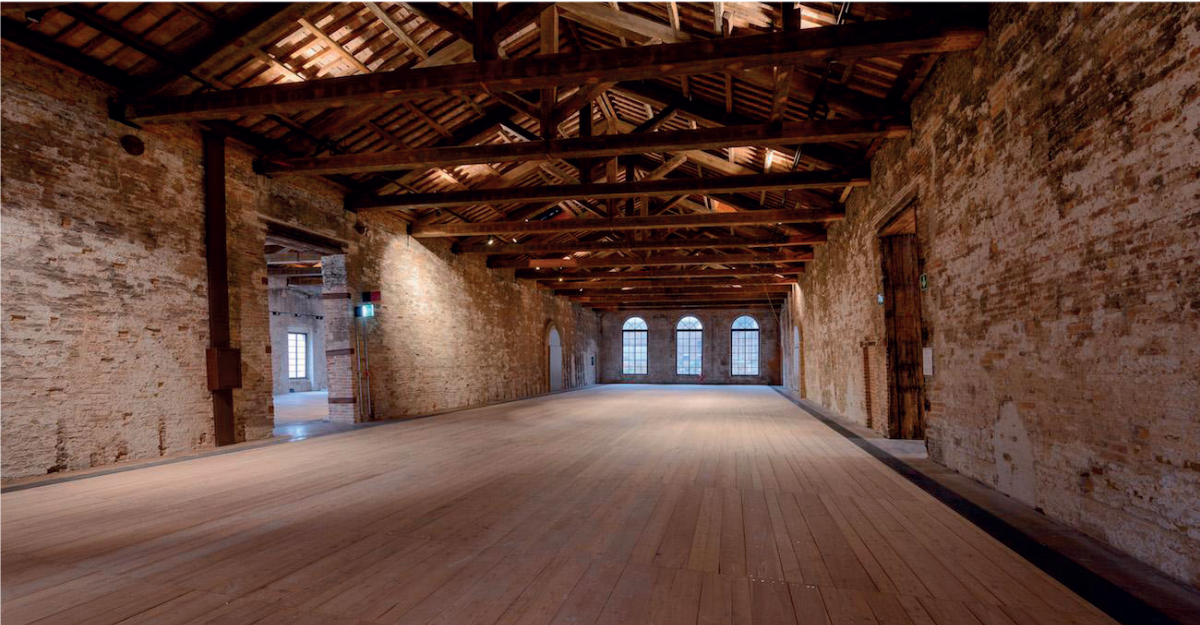
The national participation of the country of Luxemburg zooms into the potential of celestial bodies, planets and the moon. Titled 'Down to Earth', the presentation, curated by Francelle Cane and Marija Marić, discusses the exploitation of space resources, space mining and the idea of 'moon laboratories.' A live lab, workshops and film material aims to compose an immersive experience.
Dutch Pavilion

Commissioned by Aric Chen, creative and artistic director of the Nieuwe Instituut, and curated by Jan Jongert of Superuse Studio, the Dutch Pavilion this year is looking at sustainable futures at a macro scale. To that end, 'Plumbing the System,' as the Pavilion is themed, will present 'The Waterworks of Money,' a series of drawings by architect Carlijn Kingma. What brings everything together is the element of water, as 'road maps' are reimagined as alternative 'flows,' proposing a more socially and ecologically regenerative economy.
Irish Pavilion
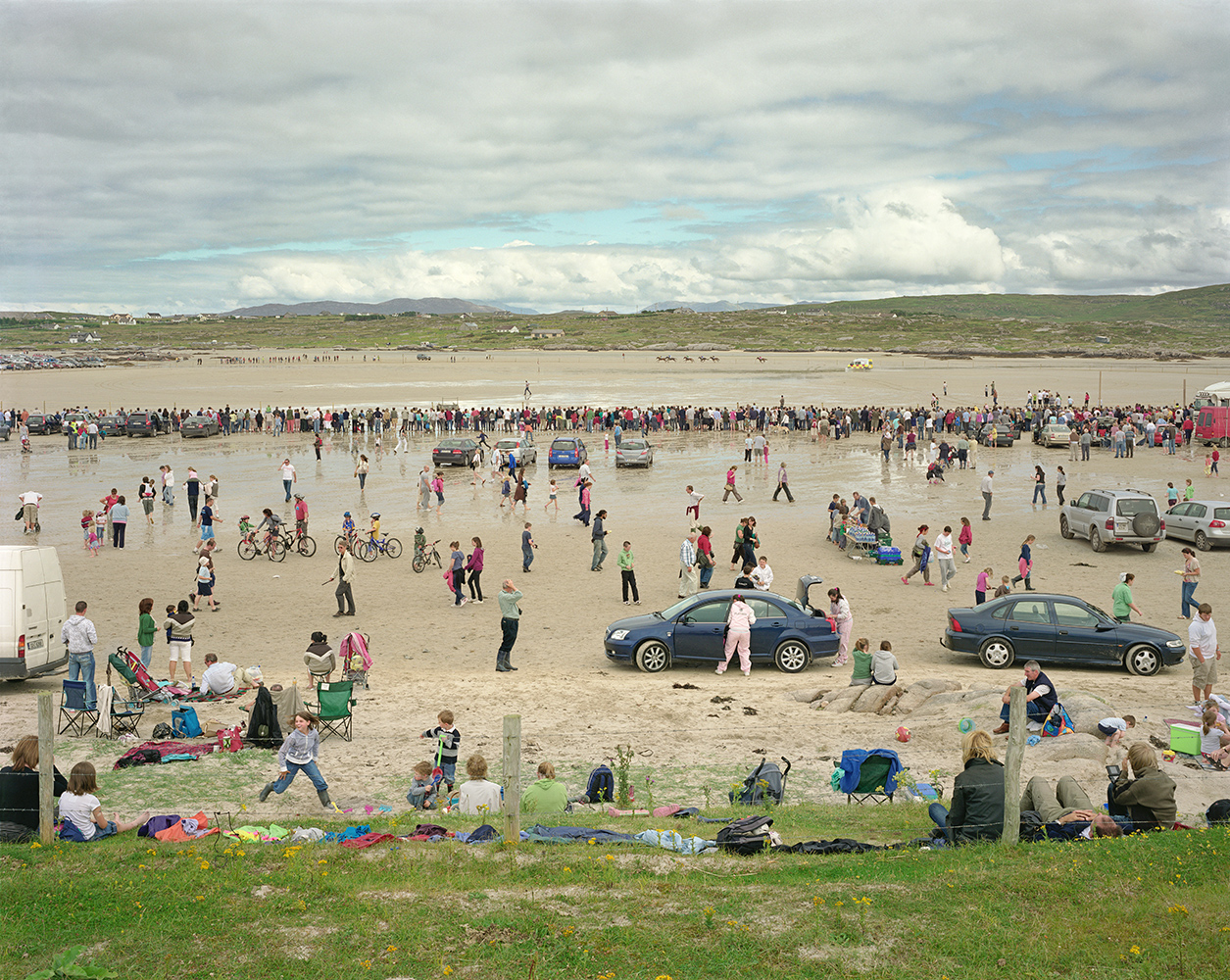
The 'resilience of Irish islander communities' is brought front and centre at the Irish Pavilion in Venice Architecture Biennale 2023. Titled 'In Search of Hy-Brasil,' the exhibition zooms in on the diverse communities, cultures and experiences of Ireland's remote islands. Drawing on the biennale's overall theme 'The Laboratory of the Future,' the project, curated by a team of five architects - Peter Carroll, Peter Cody, Elizabeth Hatz, Mary Laheen and Joseph Mackey - blends landscape and human, language and the natural world.
Taiwan Collateral Event
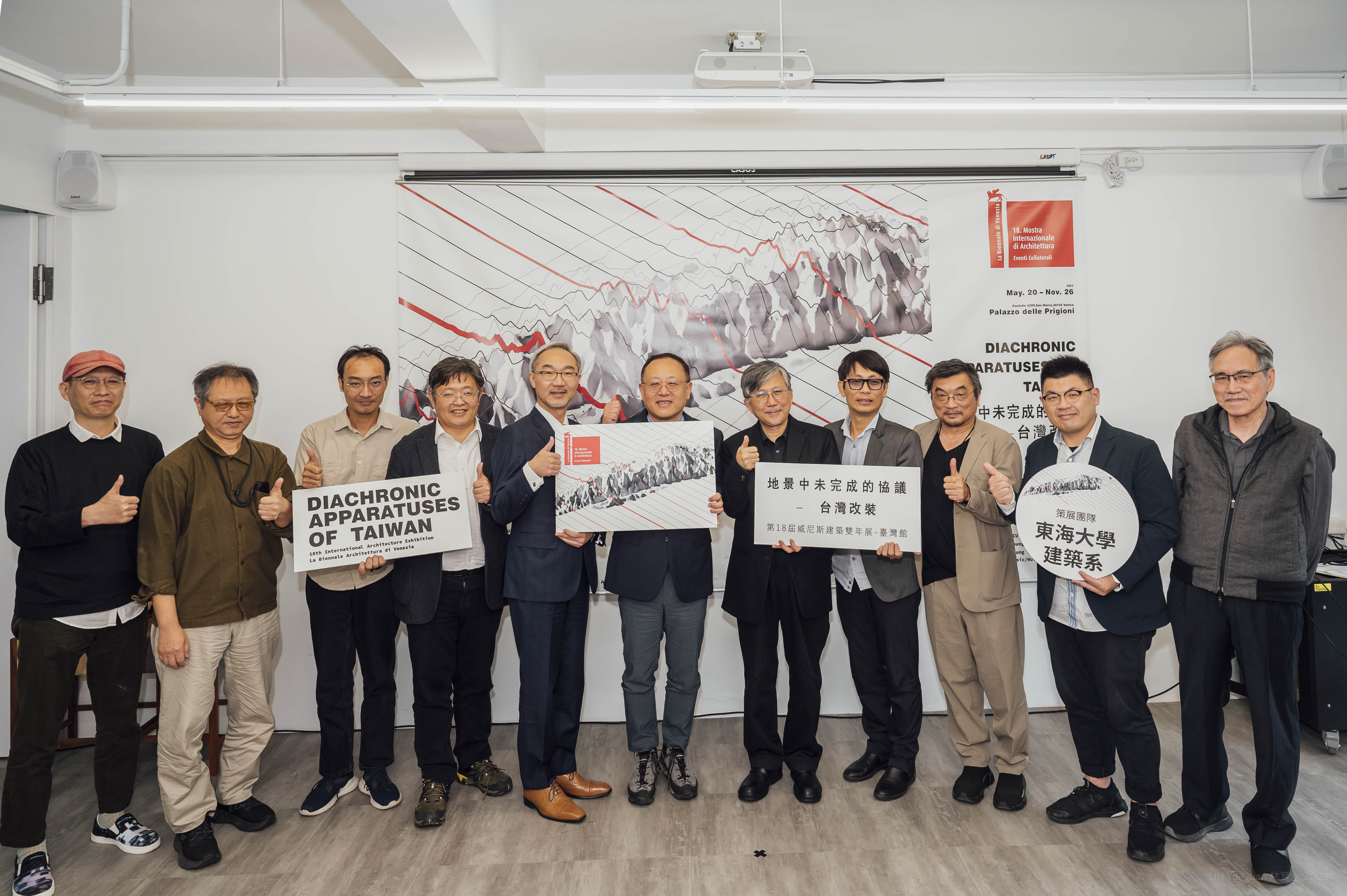
Organized by the National Taiwan Museum of Fine Arts (NTMoFA) under the Ministry of Culture, Taiwan's pavilion, 'Diachronic Apparatuses of Taiwan – Architecture as on-going details within landscape' is curated by the Architectural Department of Tunghai University. In its studies, the team looks into the island's agricultural landscapes, creating an inventory that draws on nature and geography and signals towards a better future. The event will be held at the Palazzo delle Prigioni, and the exhibit connects with its location too. The team described: 'Measuring approximately 15 meters in length, it serves to expand and unify different landscape works while blending into the palazzo’s interior on the horizontal plane. The bottom of the table is wrapped in black netting that is commonly seen in Taiwanese greenhouses. The light seeping through the mesh conjures a sense of suspension, seemingly transforming the table into an aircraft carrier housing agricultural landscapes from all over the island, thus echoing Venice’s architectural characteristic as a city propped up by man-made bridges.'
Panama Pavilion
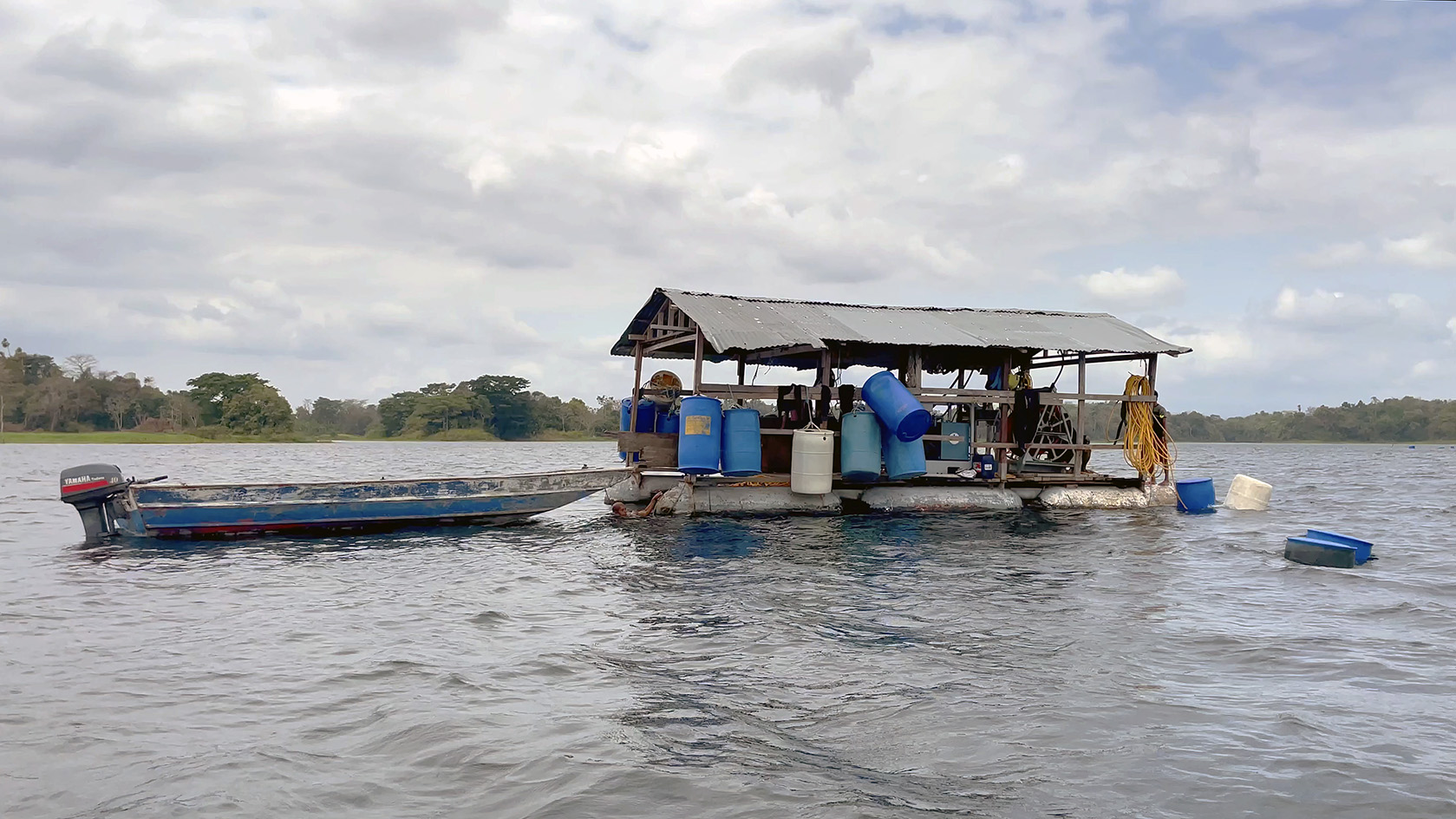
The Republic of Panama and its commissioned curator, Aimée Lam Tunon, also plan to be at the Venice Architecture Biennale 2023. ‘Panama: Stories from beneath the water’ zooms in on three different areas within the former Panama Canal Zone and the impact this had on the existing communities, cultures and nature of the region. 'Since antiquity, the tropics have been widely recognized as a symbol of exotic beauty, dangerous animals, and luxuriant vegetation. Portrayed as a faraway place, with different histories, languages, and cultures, this geographical area represents an amalgamation of qualities that define the fantastic and mysterious nature of reality. Often considered from a western perspective to be a hostile environment to progress, the tropics represent everything that Europe and the United States are not (Lasso, 2019), the antithesis of civilized modernity. The exhibition of the Panamanian Pavilion should provide a counternarrative to this status quo, with Panama as a case study for a future vision of a ‘tropical’ nation, by recovering and connecting its various historical influences,' said Lam Tunon.
Kosovo Pavilion
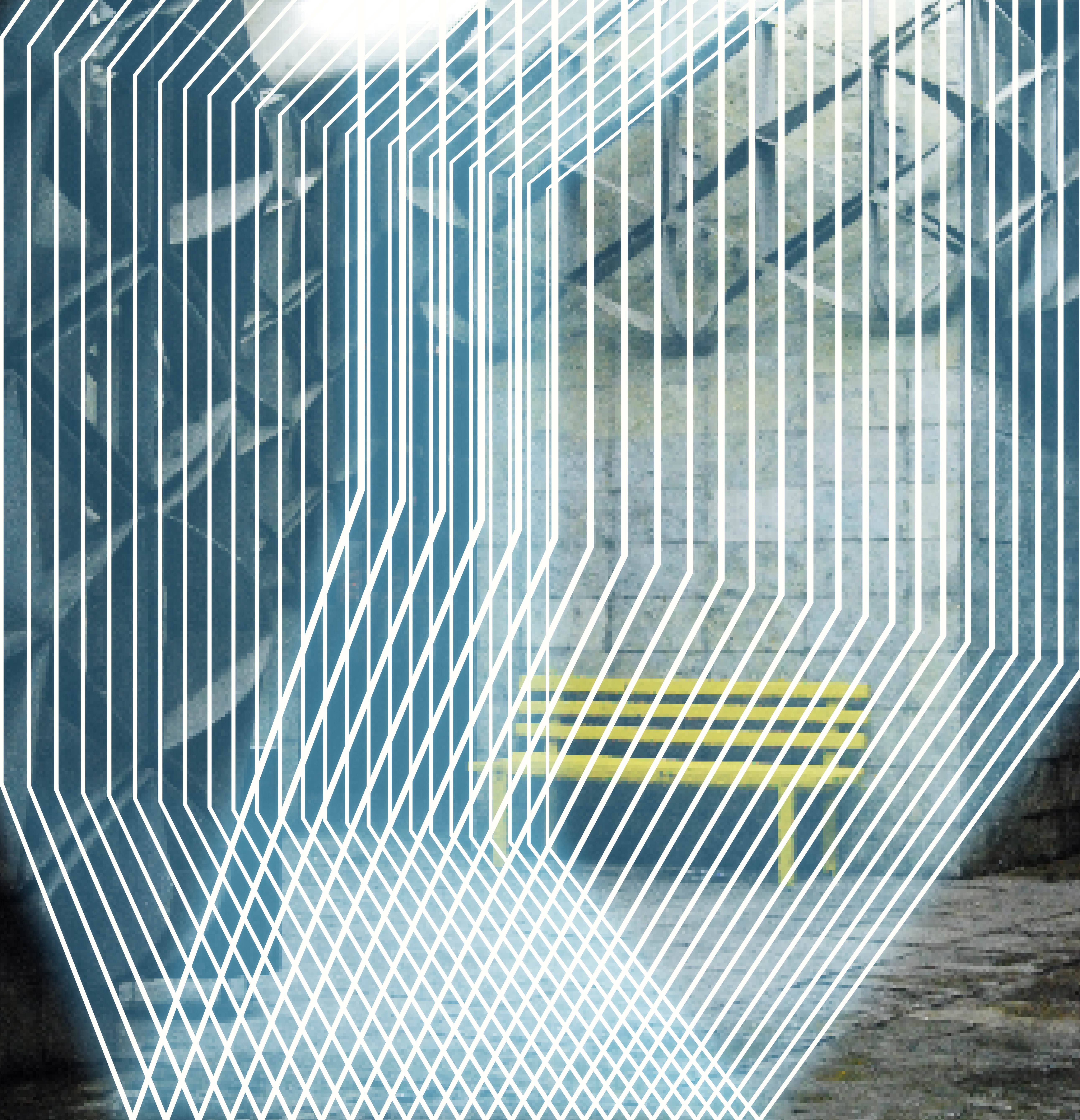
Located in the Arsenale, the Republic of Kosovo are entering the Venice Architecture Biennale 2023 with a show presenting work by architects Poliksen Qorri-Dragaj and Hamdi Qorri. Its the fifth time Kosovo is part of the architectural festival, and this year the focus is on the concept of migration, and how it helps form the social fabric and identity of modern day Kosovo - in particular how the act of migrating is not a clear cut, single move process. 'People living in multiple places at the same time, maintaining connections between Hostland and Homeland through communication, transfer of knowledge, information, material and immaterial goods,' the curators write.
Catalonia in Venice
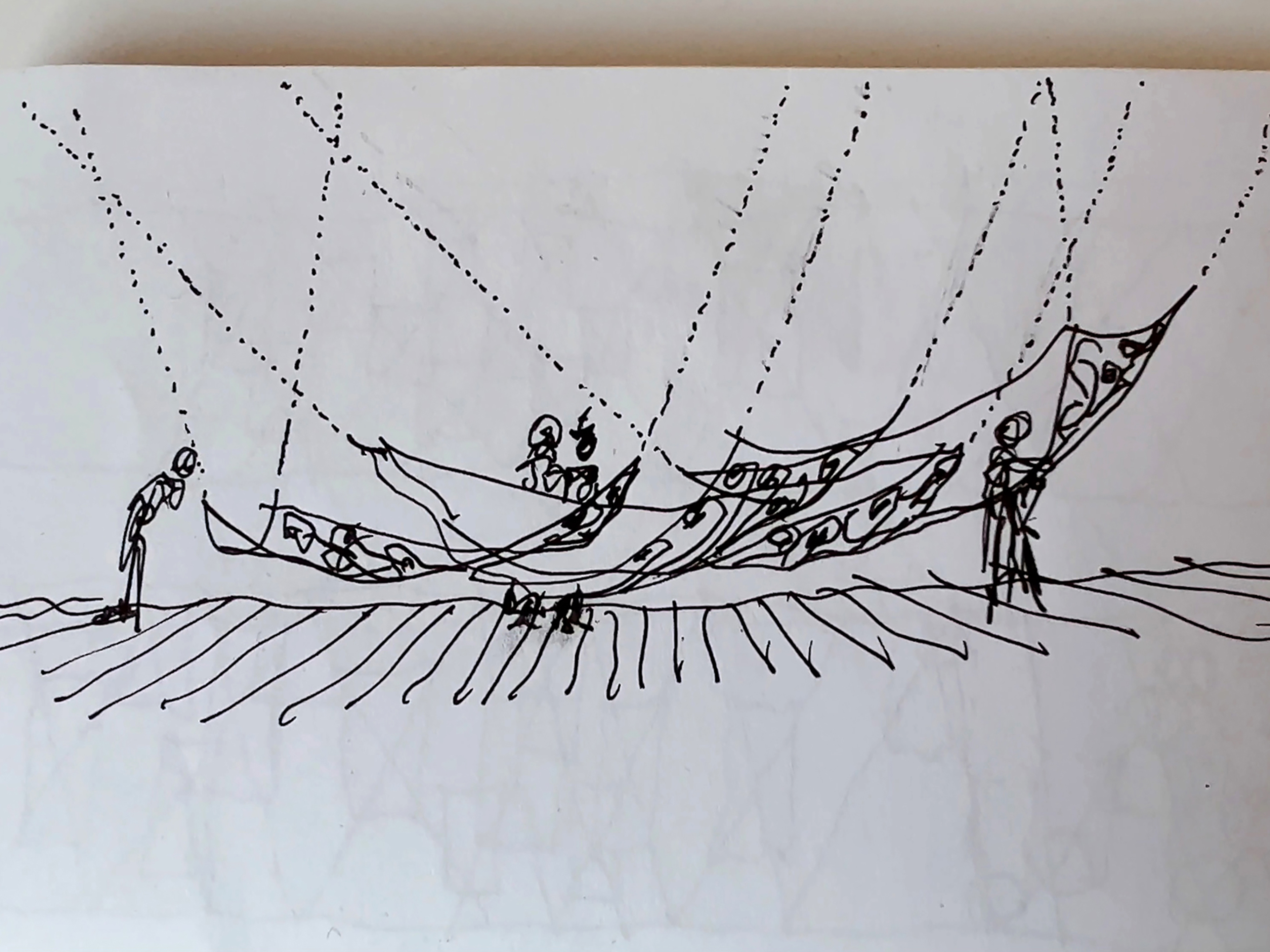
The Institut Ramon Llull presents the collateral event 'Catalonia in Venice_ Following the Fish.' The exhibition, curated by studio Leve Productora's Daniel Cid, Eva Serrats and Francesc Pla, remains true to the biennale theme and revolves around 'urbanism, work spaces and housing from the perspective of the African diaspora in Catalonia.' The display is on view at the Docks Cantieri Cucchini in San Pietro di Castello 40a.
Japanese Pavilion
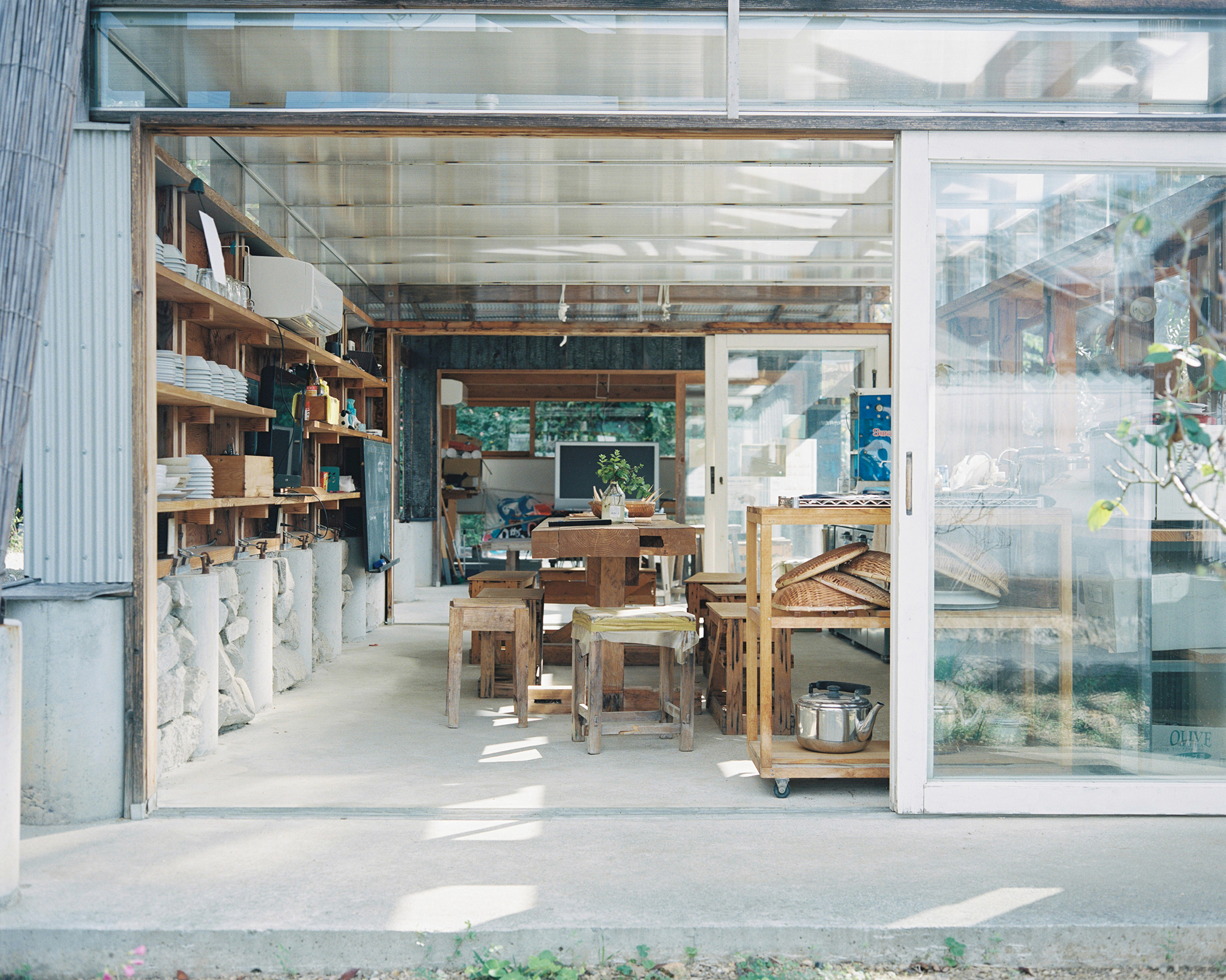
In an interesting twist, the Japanese contribution turns the focus on the country's pavilion itself, which was designed in 1956 by architect Takamasa Yoshizaka. The exhibition titled 'Architecture, a place to be loved,' is curated by a team of architects, the co-founders of studio o+h, Maki Onishi and Yuki Hyakuda, who celebrate the structure within Giardini, and through it the work of Yoshizaka. 'As of early summer 2023, sixty-seven years have passed since the completion of the Japan Pavilion. The pavilion has welcomed many people over the years, and is still standing today. The exhibition we present here this year has the theme of “Architecture, a place to be loved,” and has been carefully crafted and nurtured with a focus on the pavilion, as designed by Takamasa Yoshizaka,' the curators write. 'A place to be loved is made possible when architecture includes its engraved memories and stories, when it embodies the scenery behind it and the activities that took place in and around it. That enables the architecture to take on a broader meaning. For that reason, we start by thinking of the architecture as a 'living creature'.'
Greek Pavilion

In a fascinating exploration of the dams and reservoirs that transform the country, for the Venice Architecture Biennale 2023, the Greek Pavilion is presenting 'Bodies of Water.' The co-curators Costis Paniyiris and Andreas Nikolovgenis worked with an extensive team of architects, designers and students to compose a show that digs deep into water retention, supply and its uses. 'Bodies of Water and all related structures, such as dams and earthworks, constitute public architecture in the Roman or Vitruvian sense. It is a public project of collective emancipation, literally, as providers of essential means of sustenance, and symbolically, as proud distillations of collective toil and concern for progress,' the team writes.
The Venice Architecture Biennale 2023 is on from 20 May to Sunday 26 November 2023 (with a pre-opening vernissage on the 18 and 19 May)







